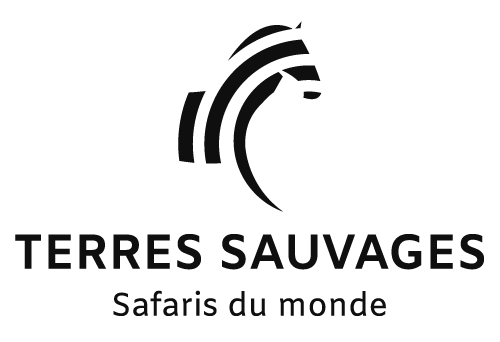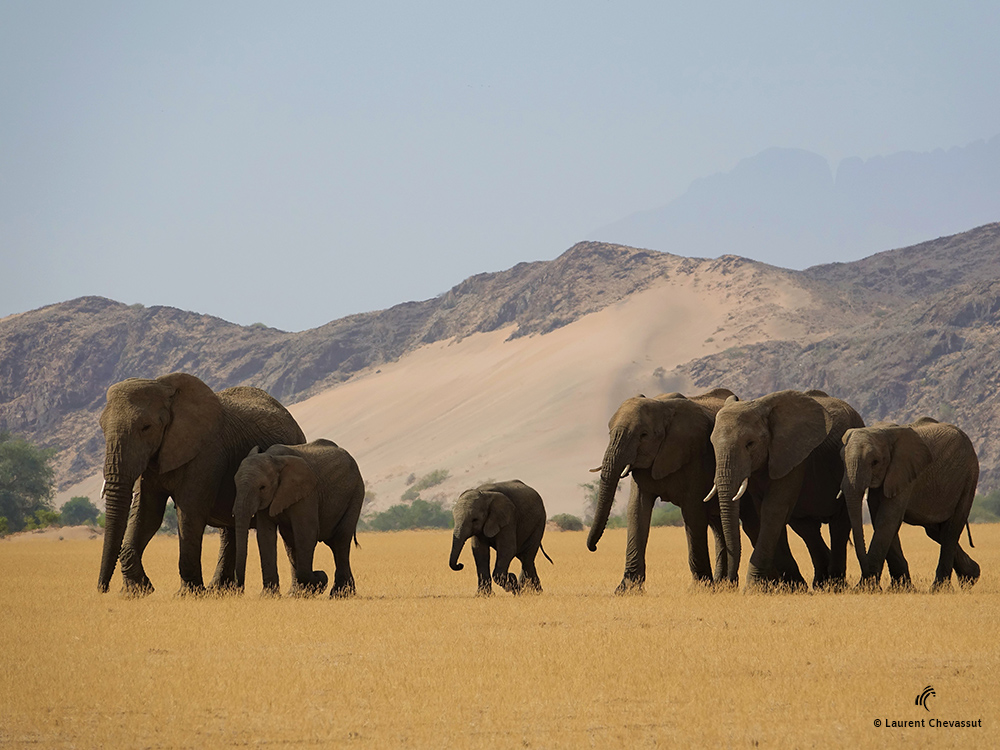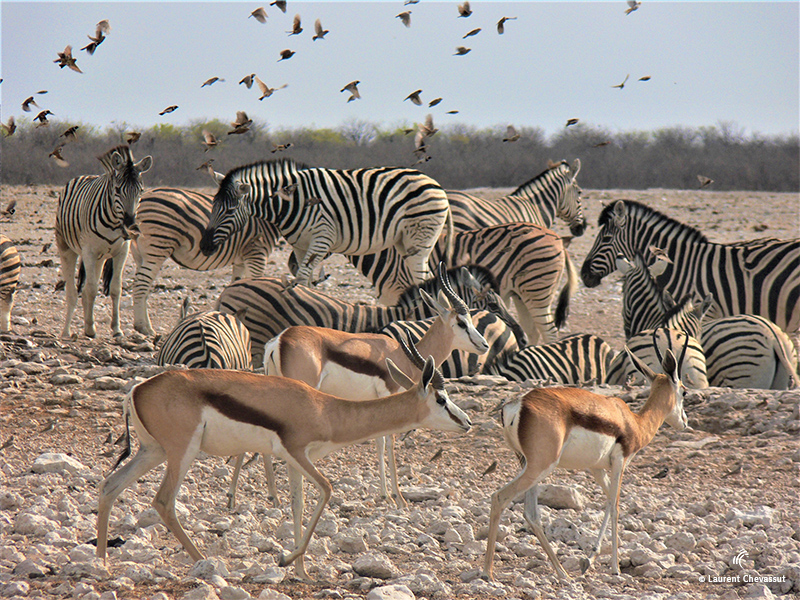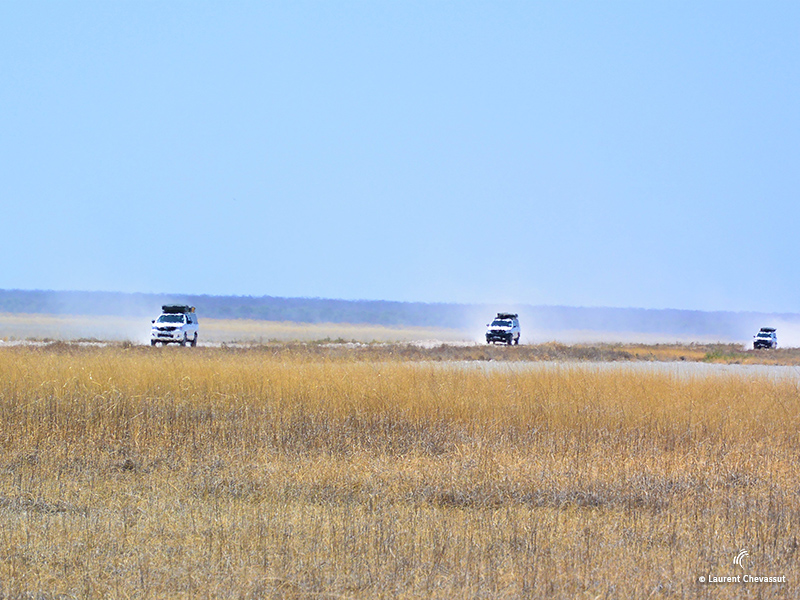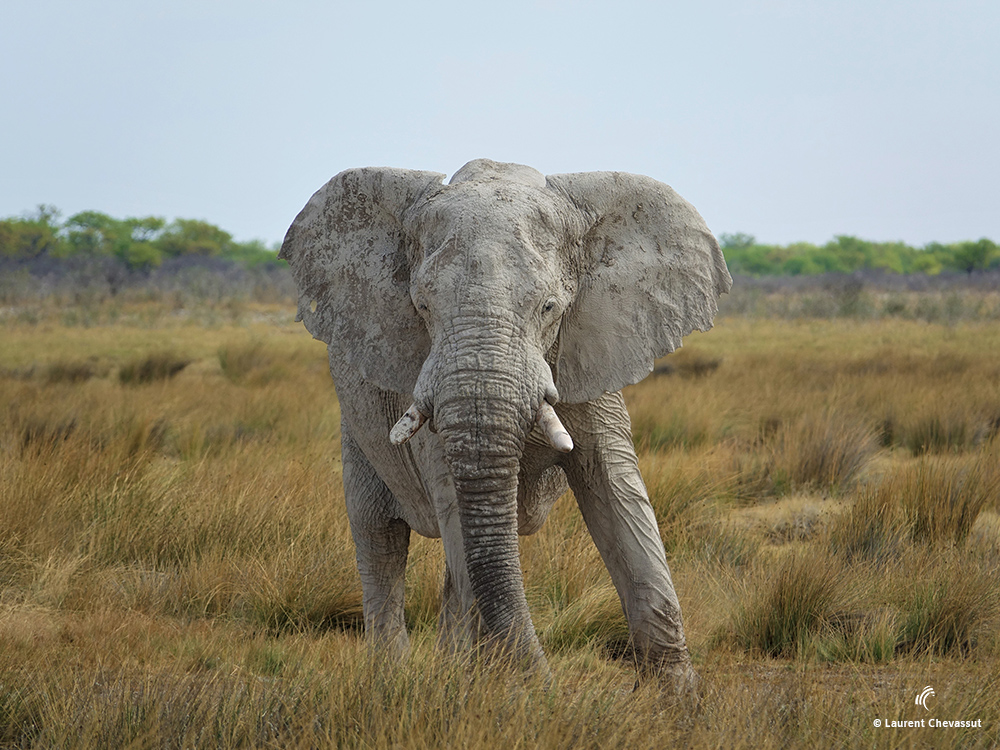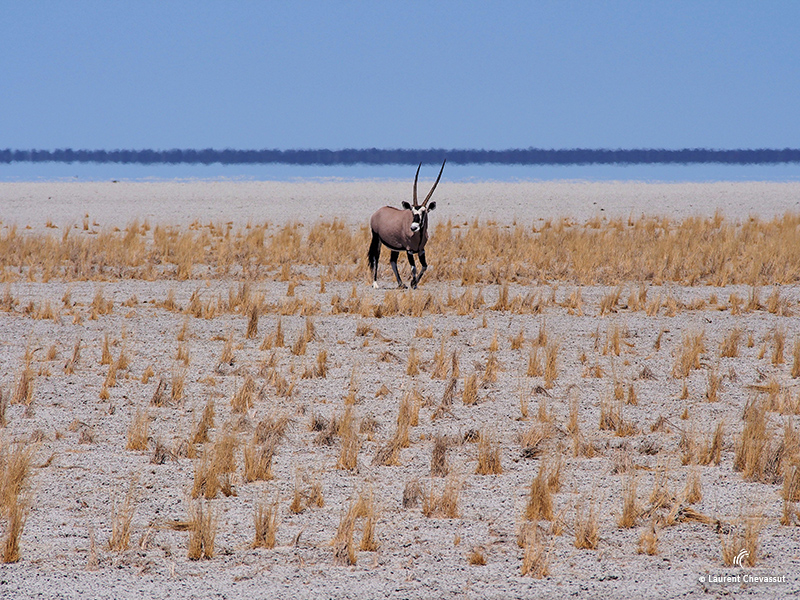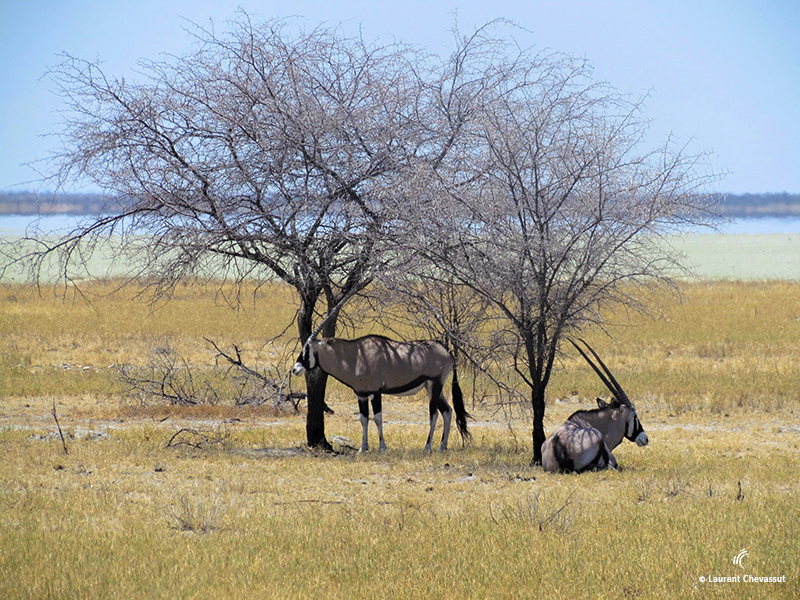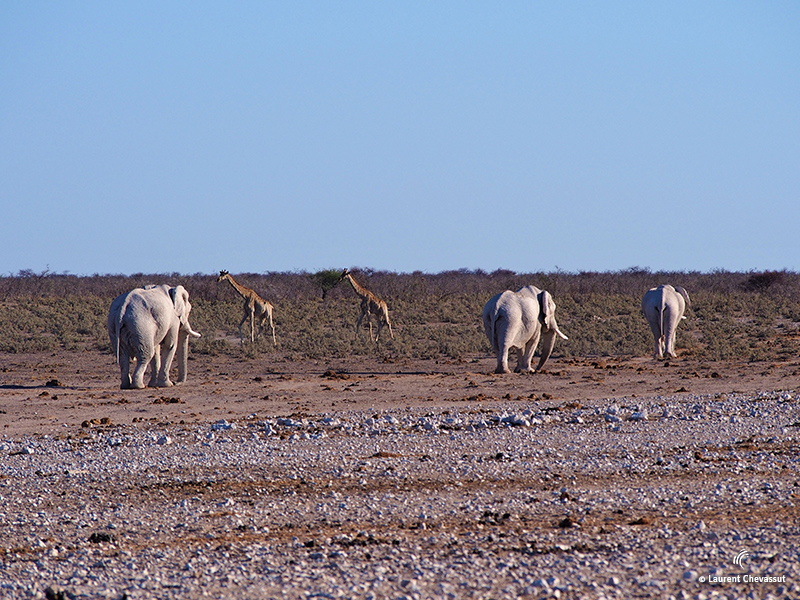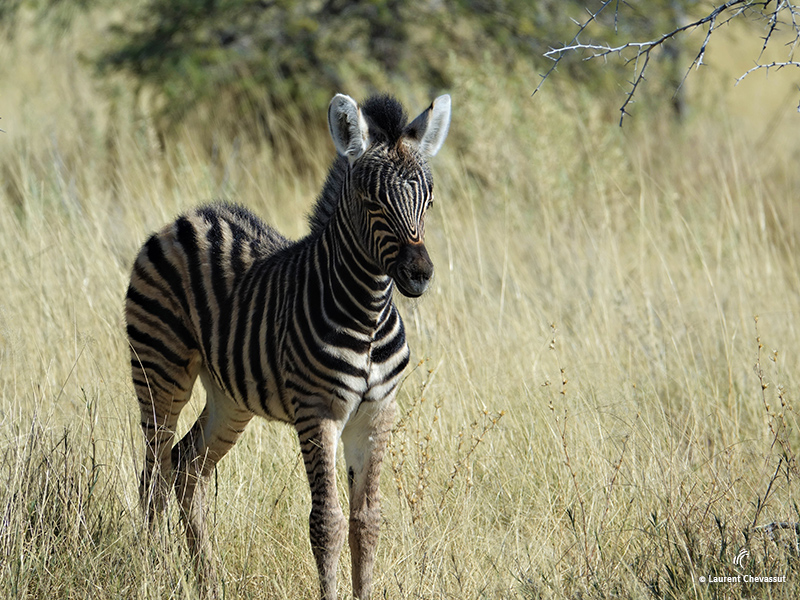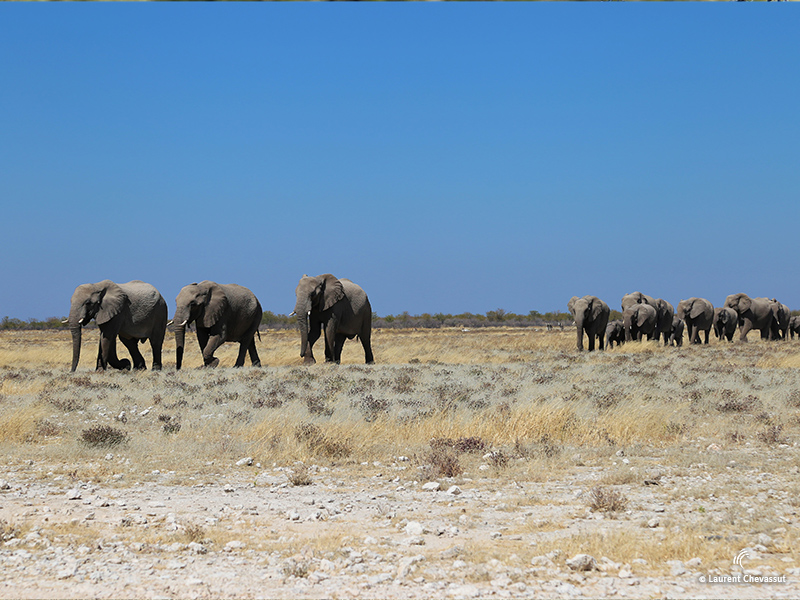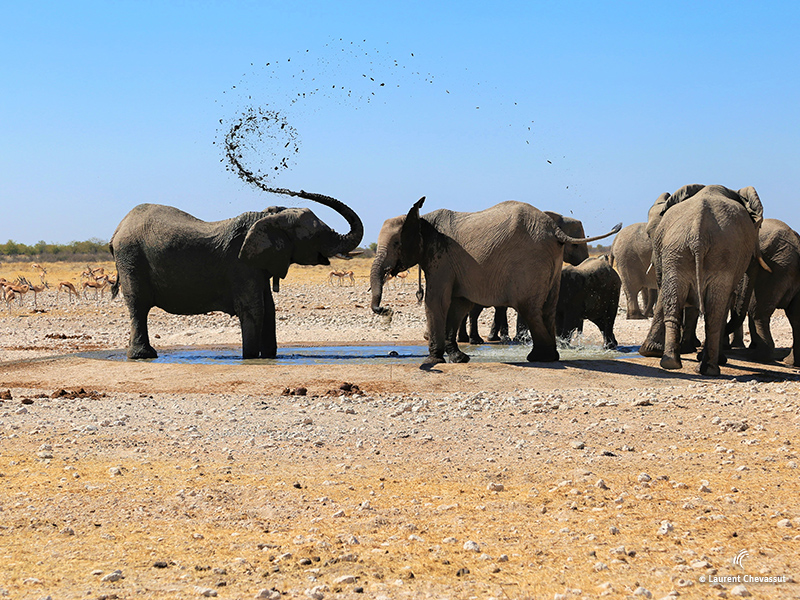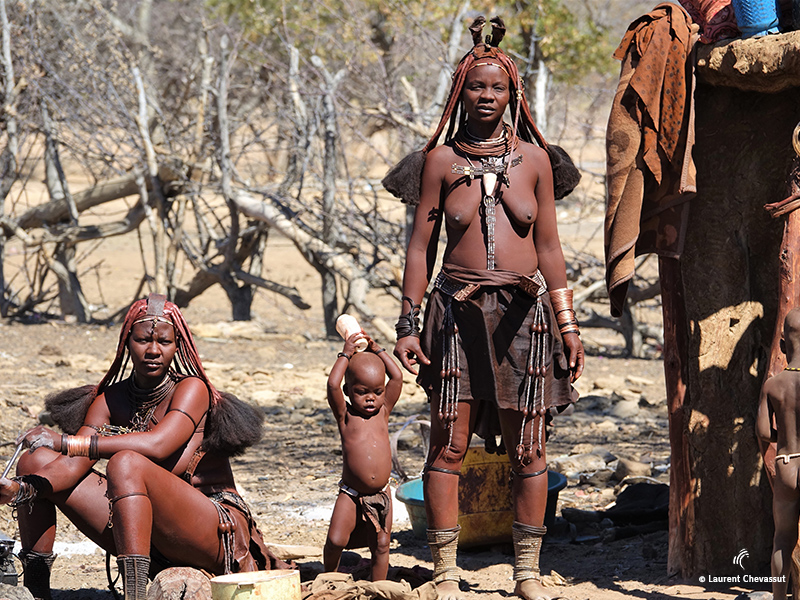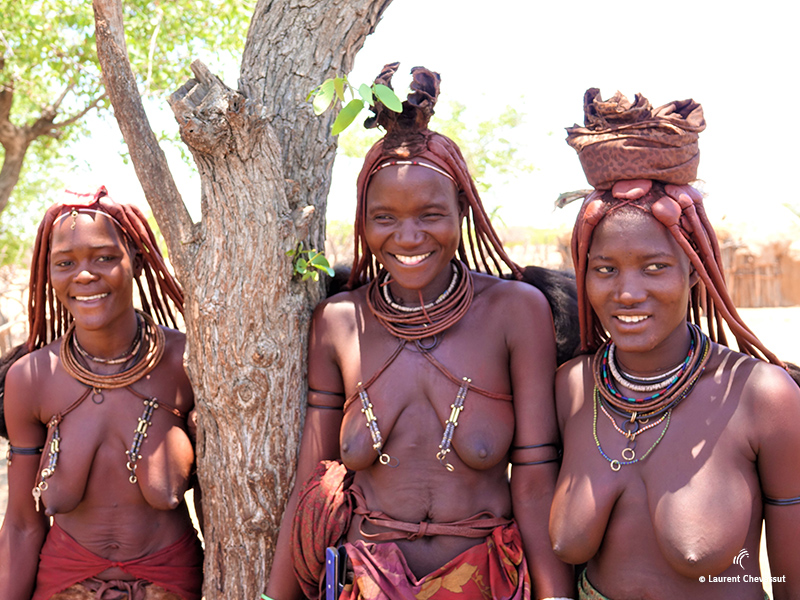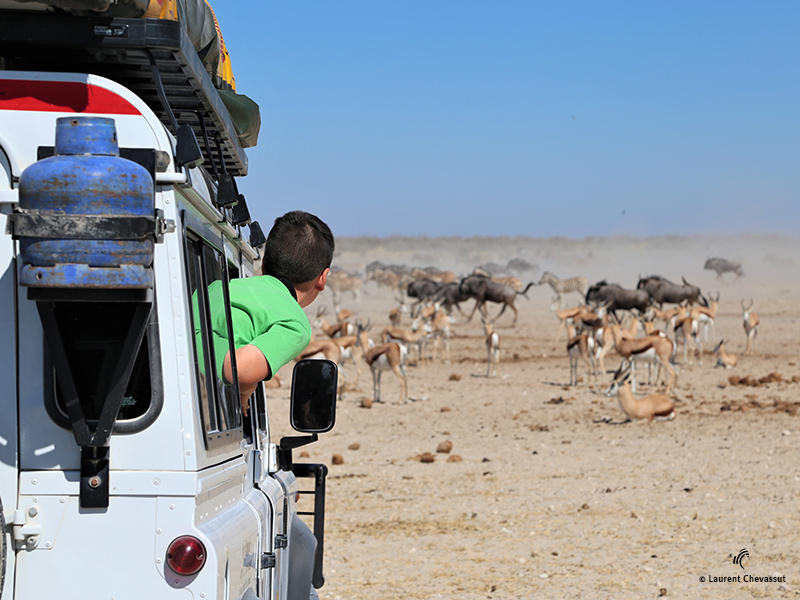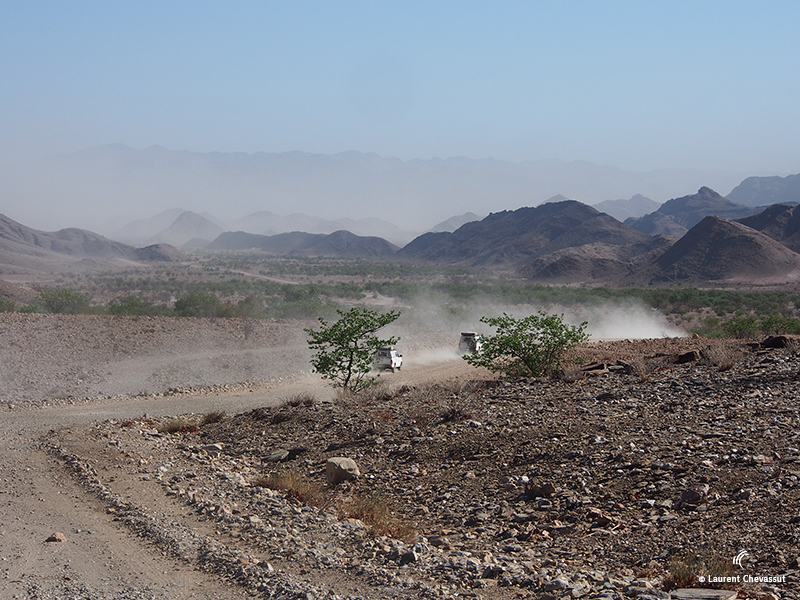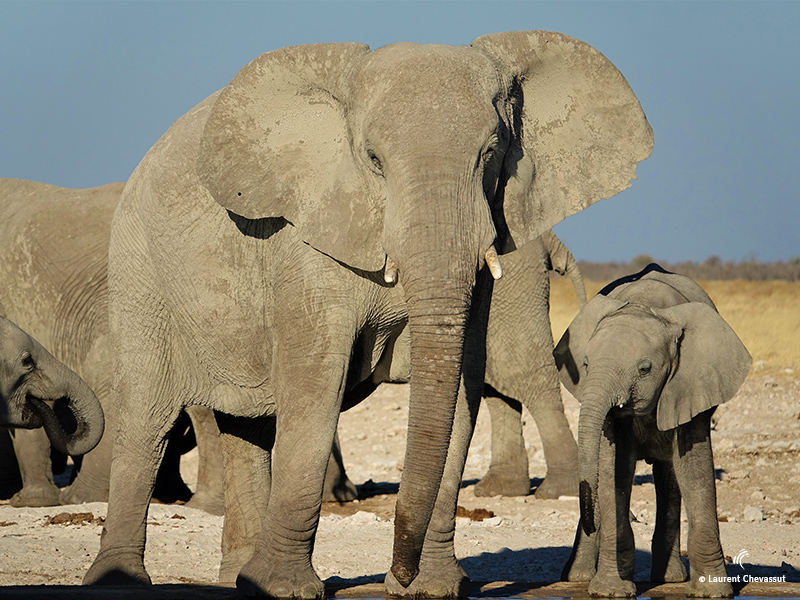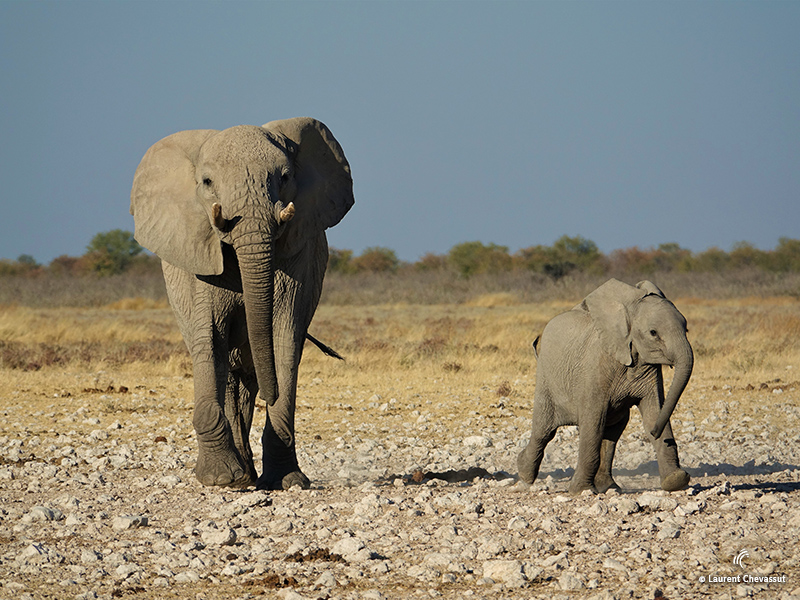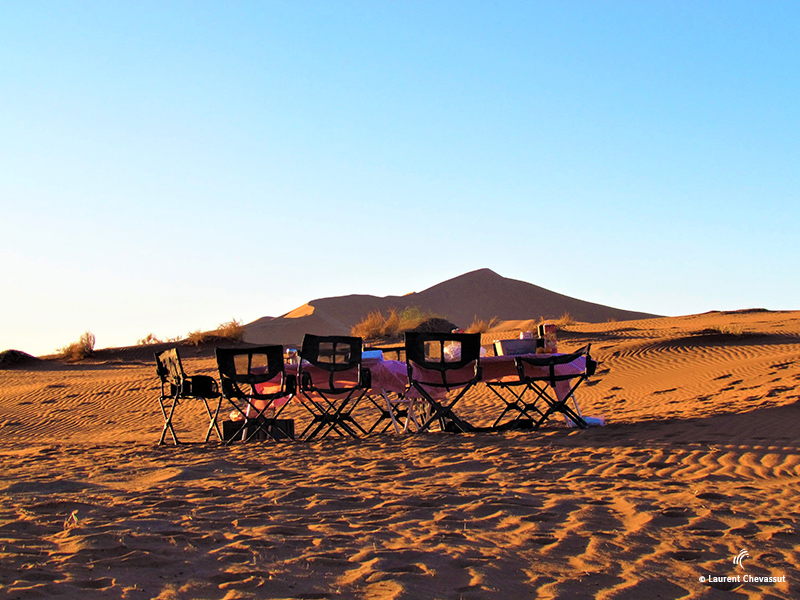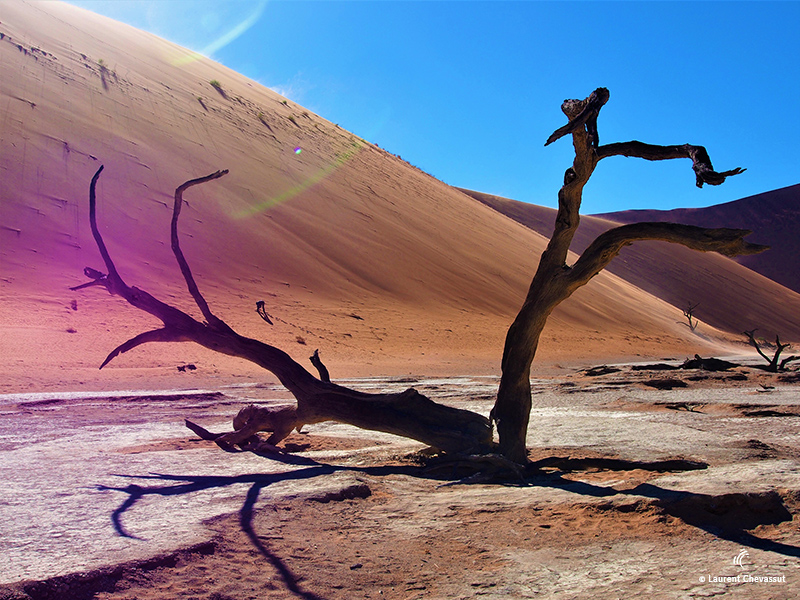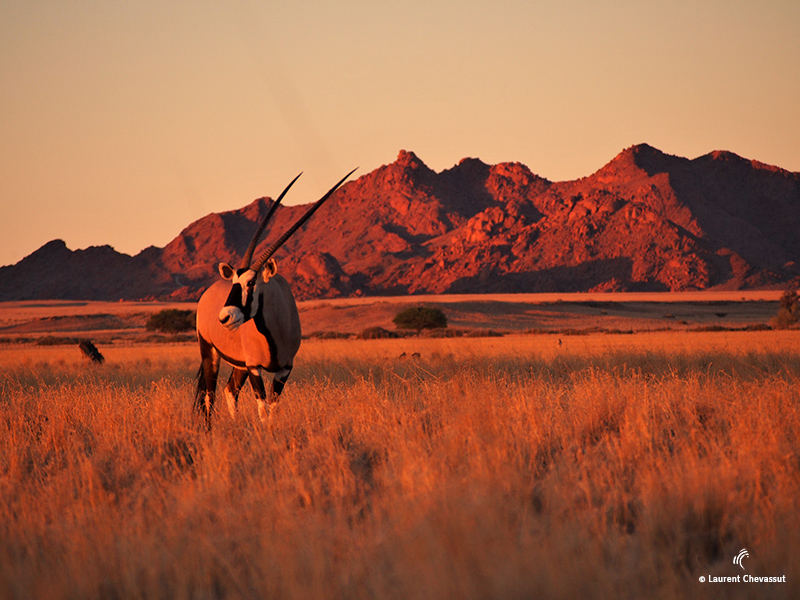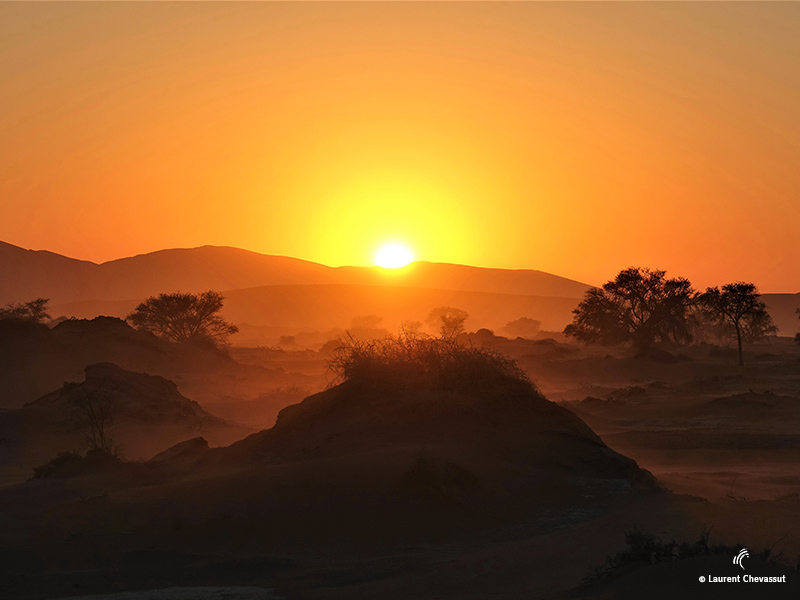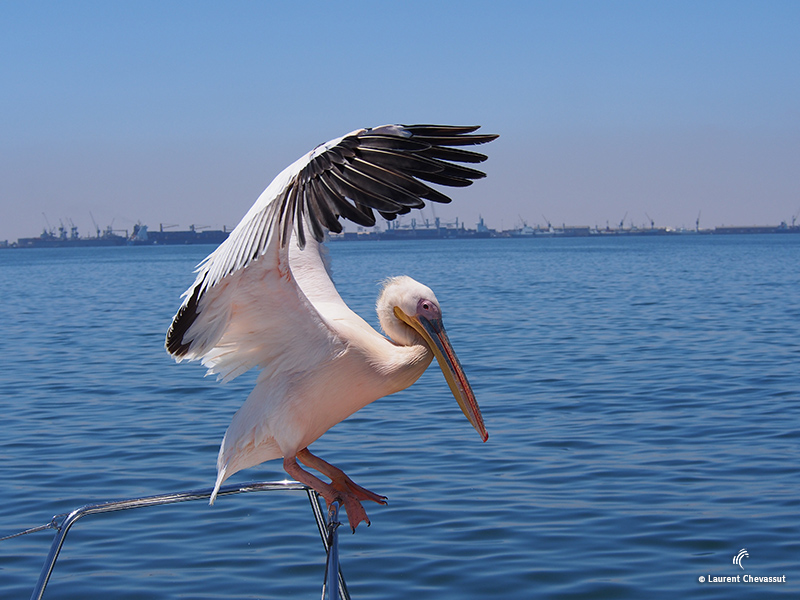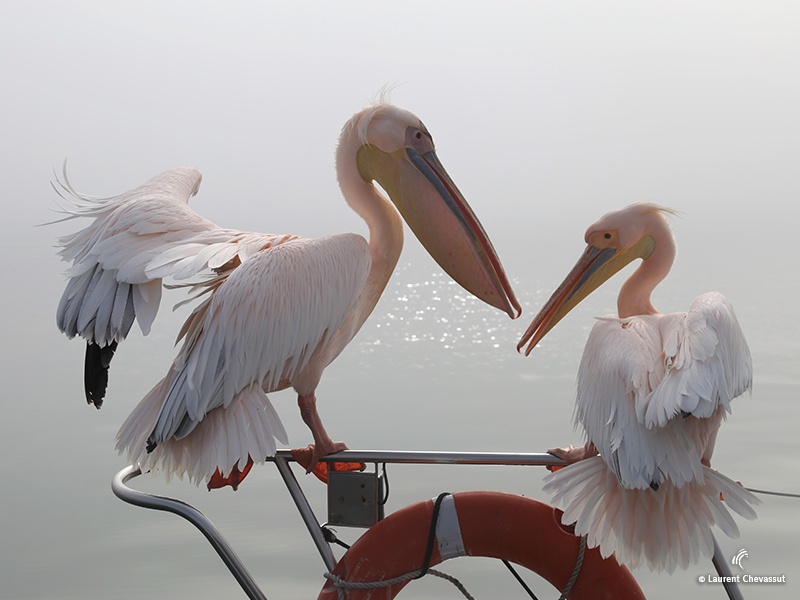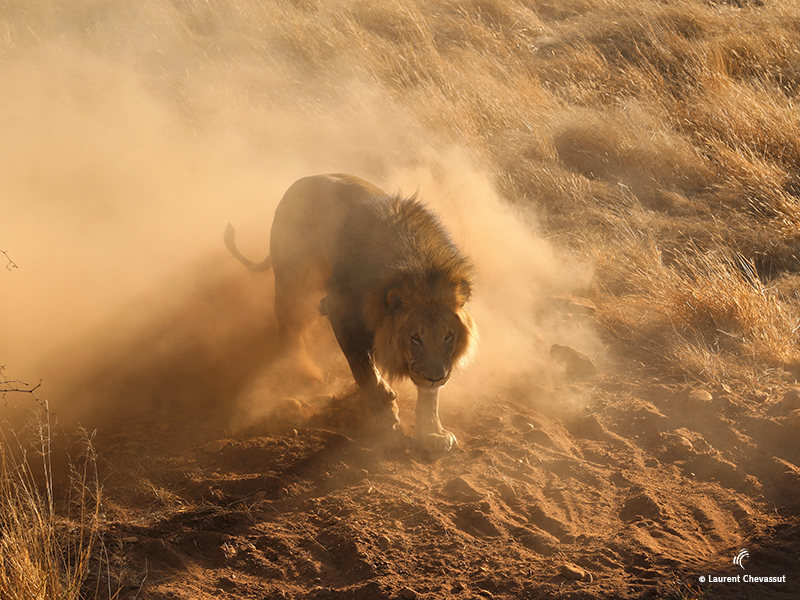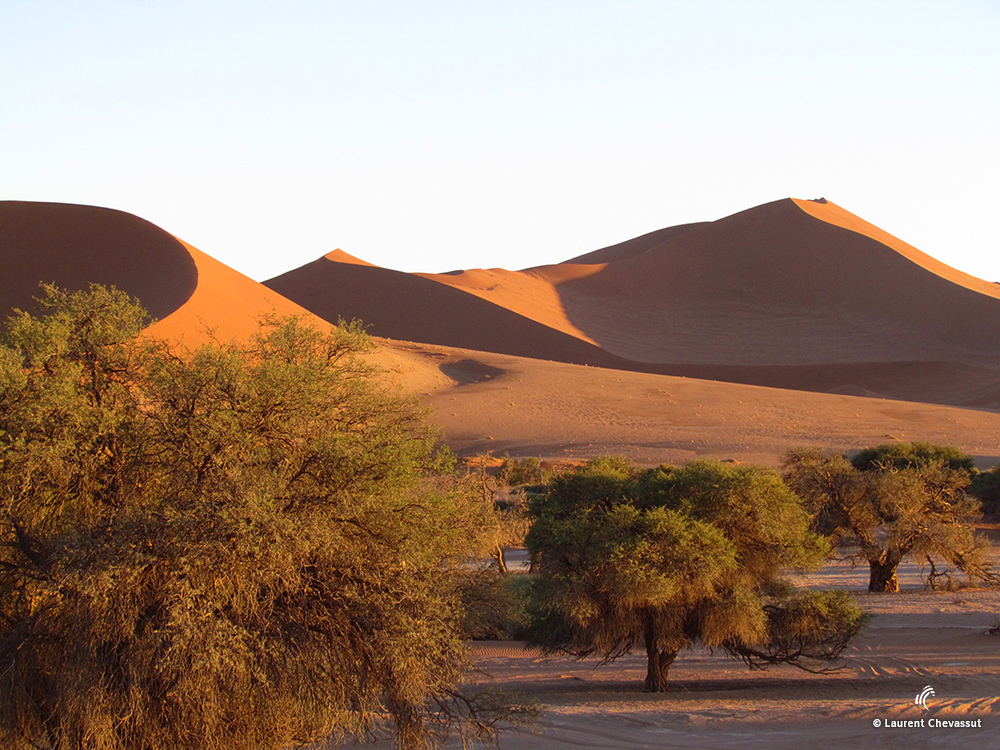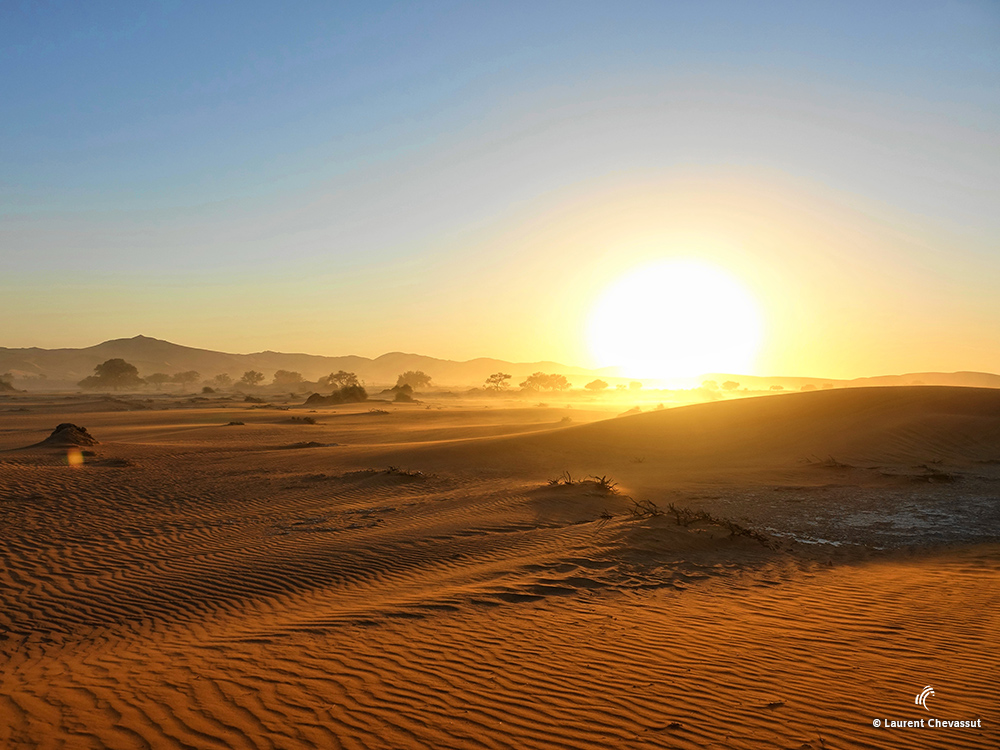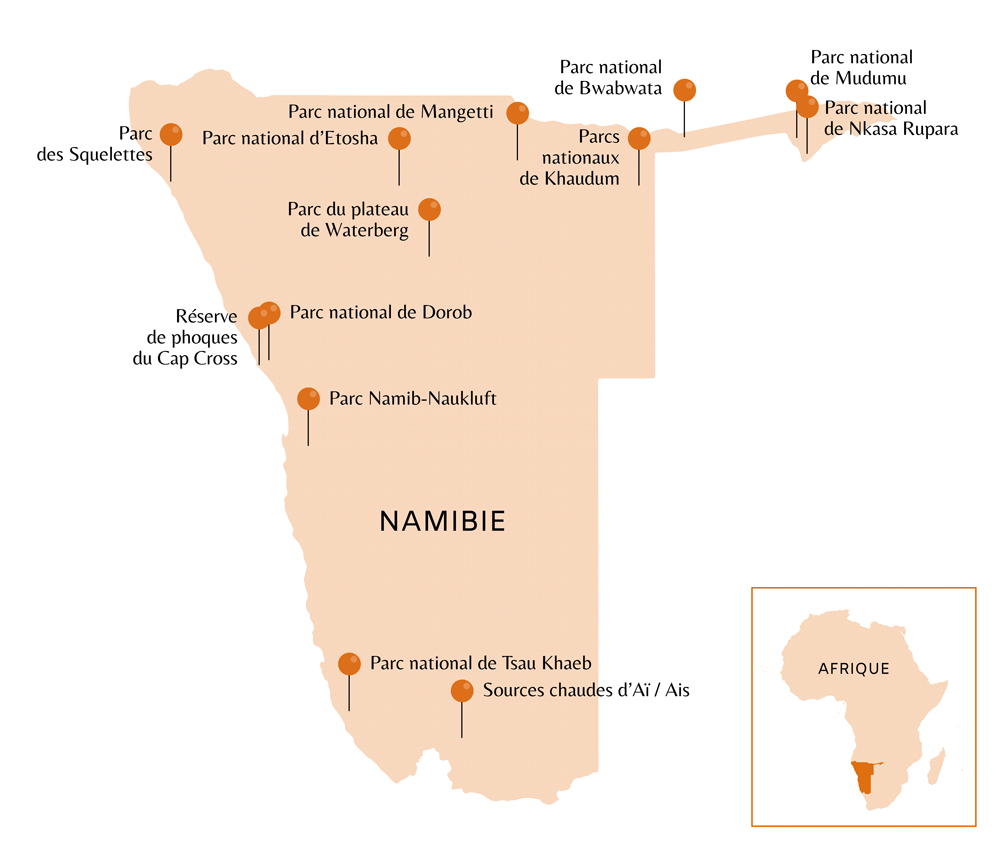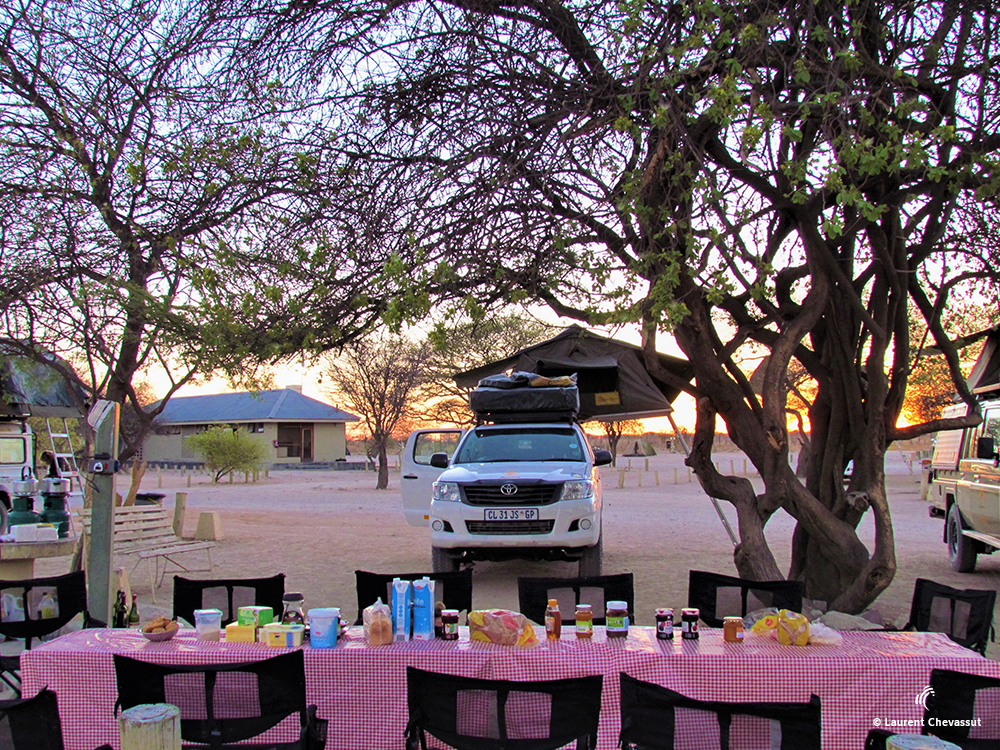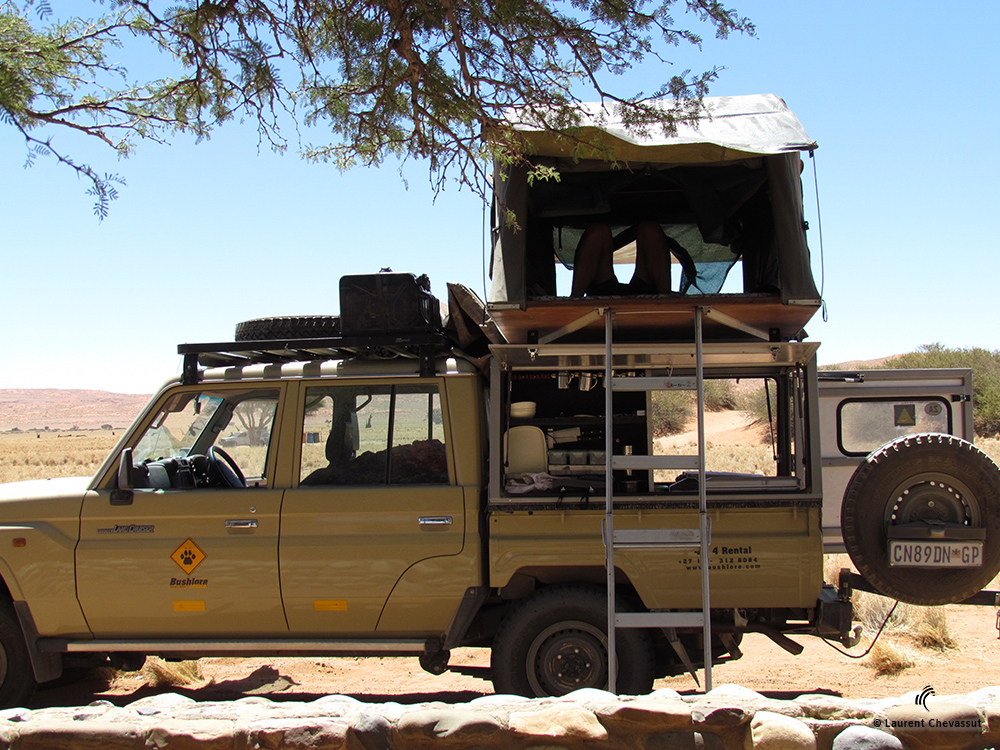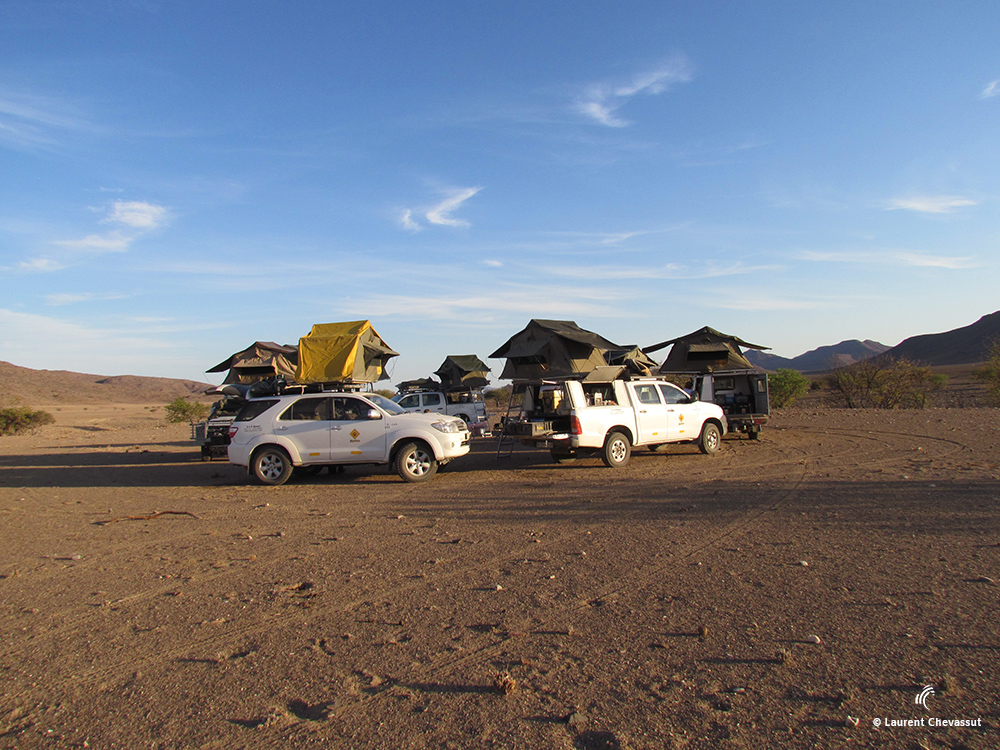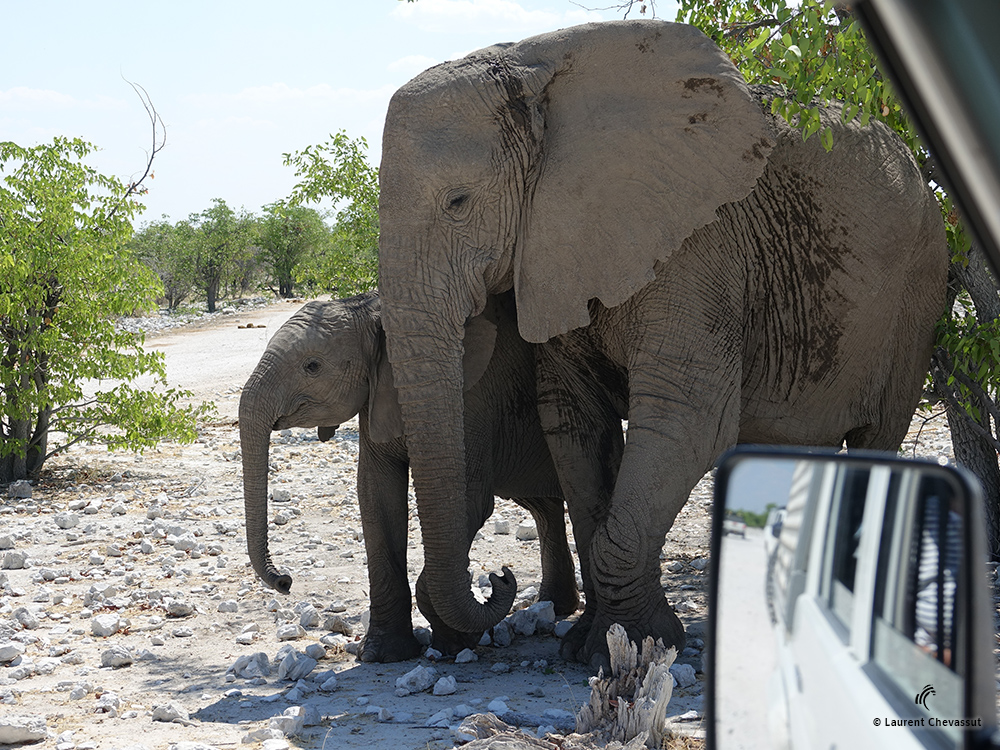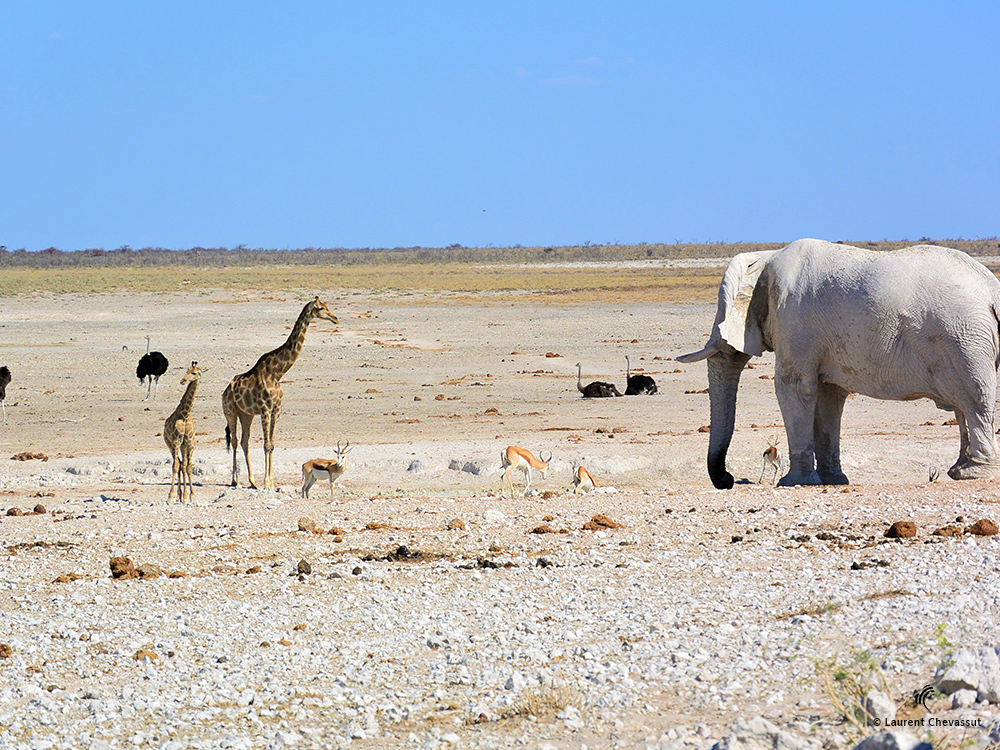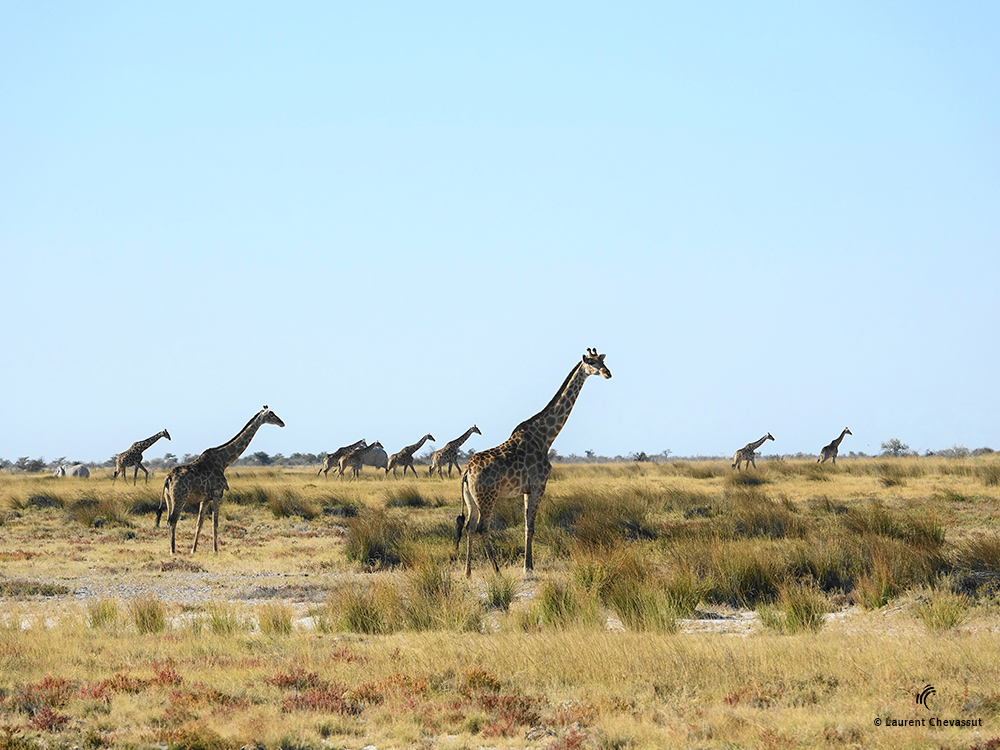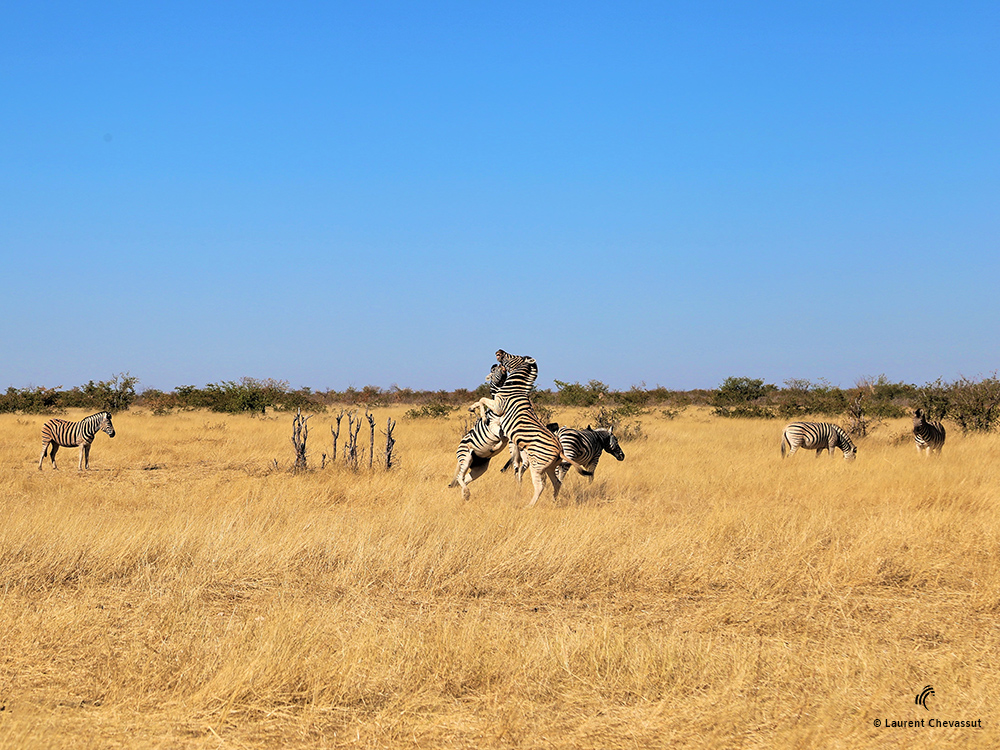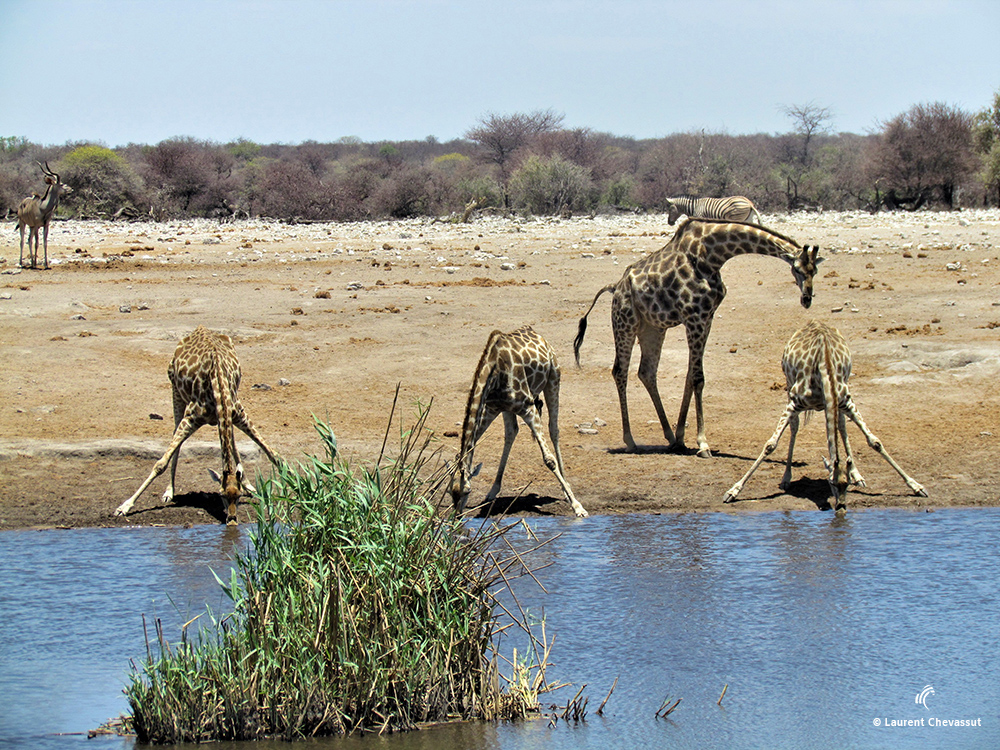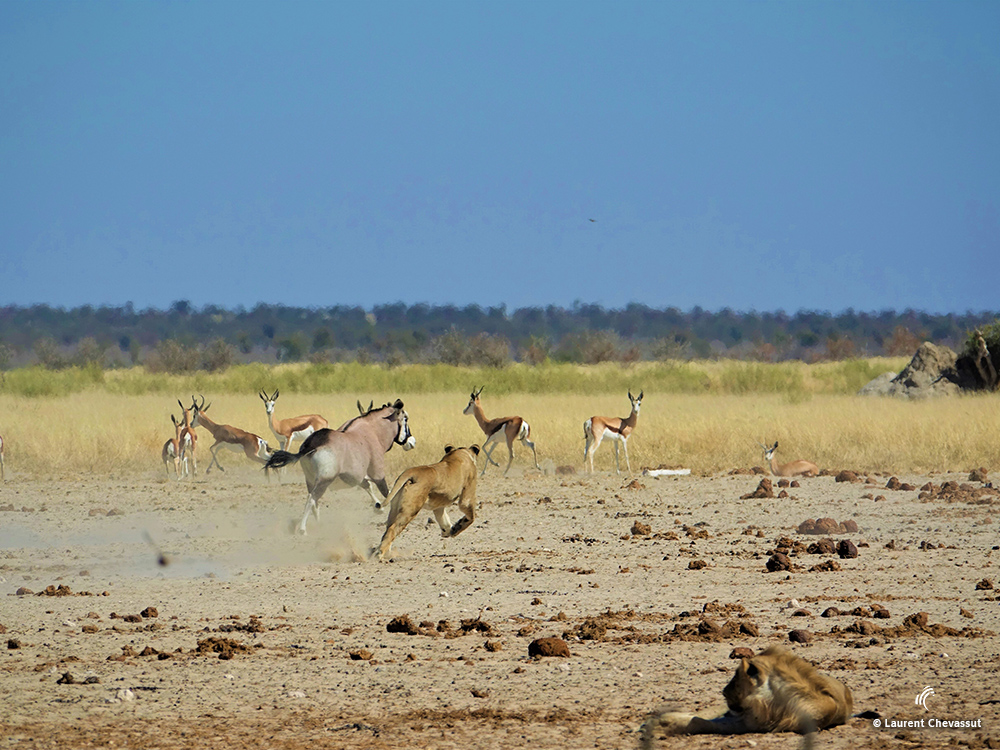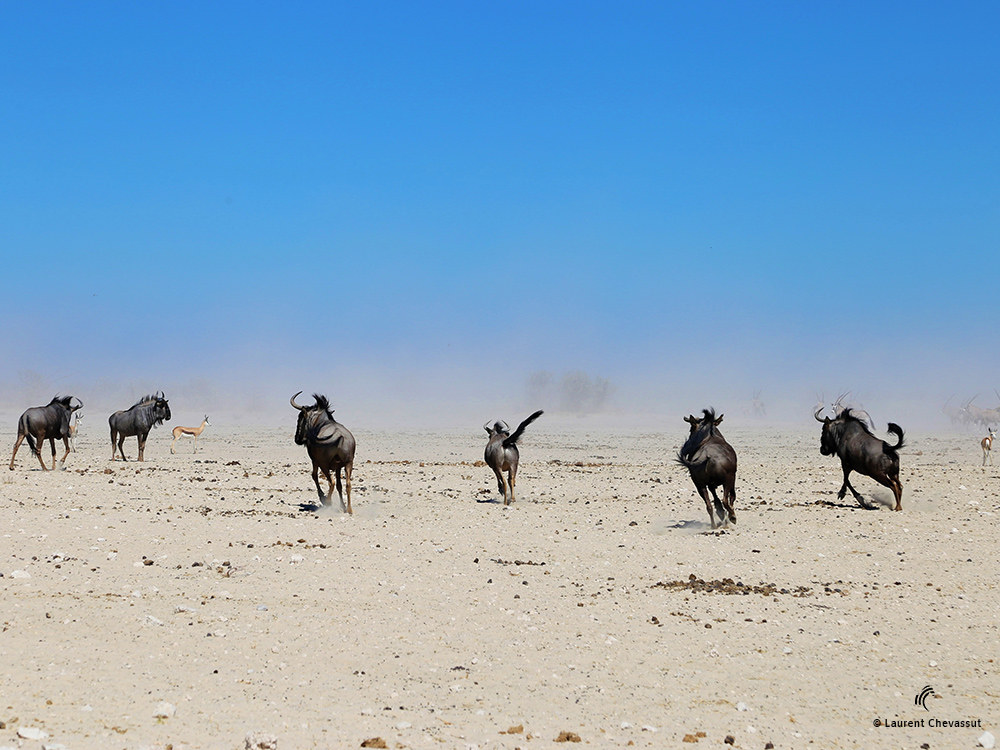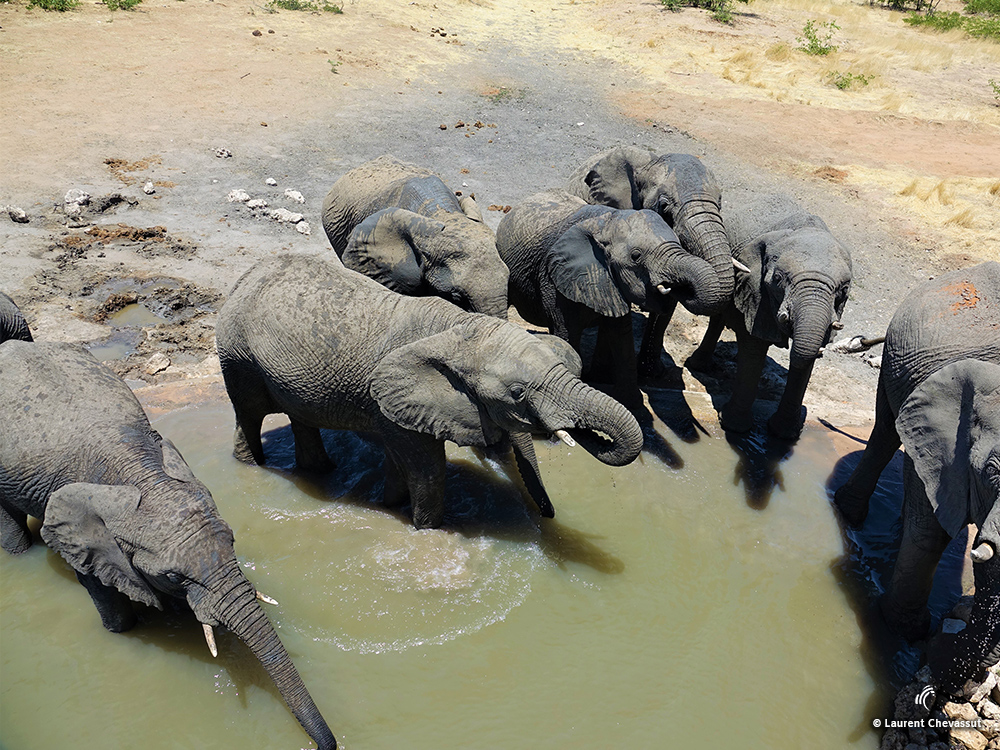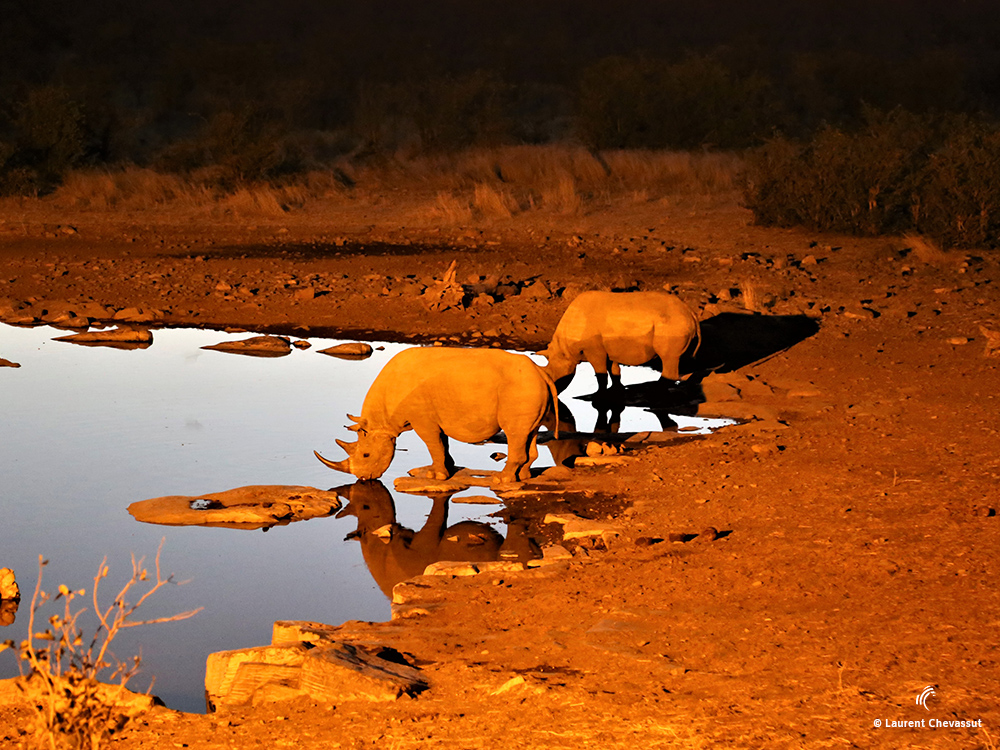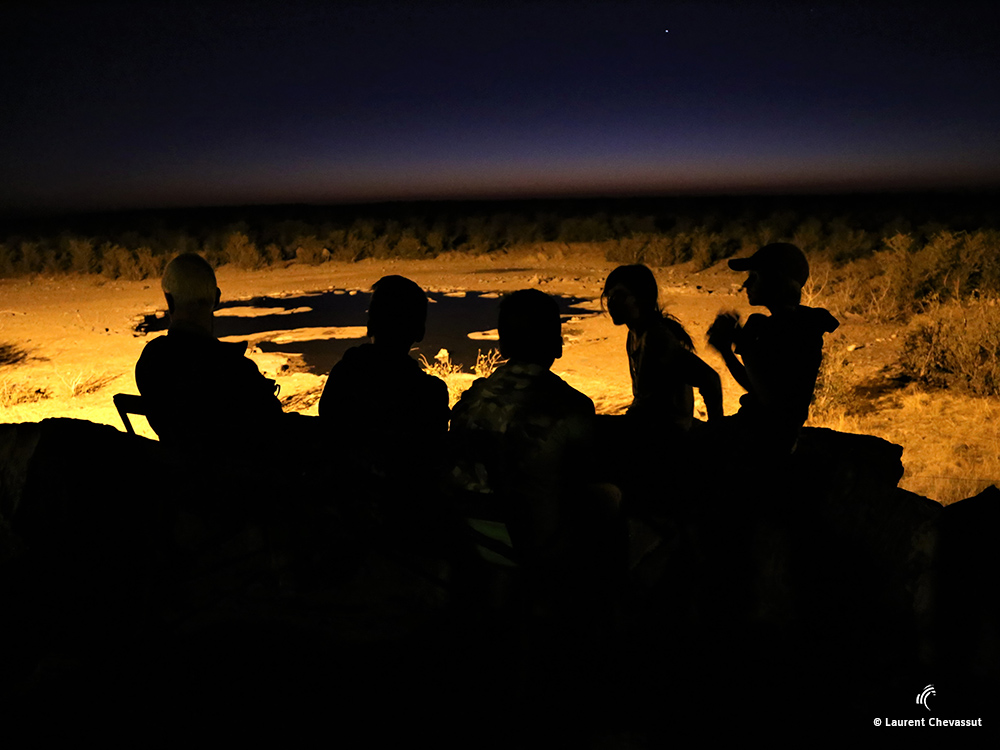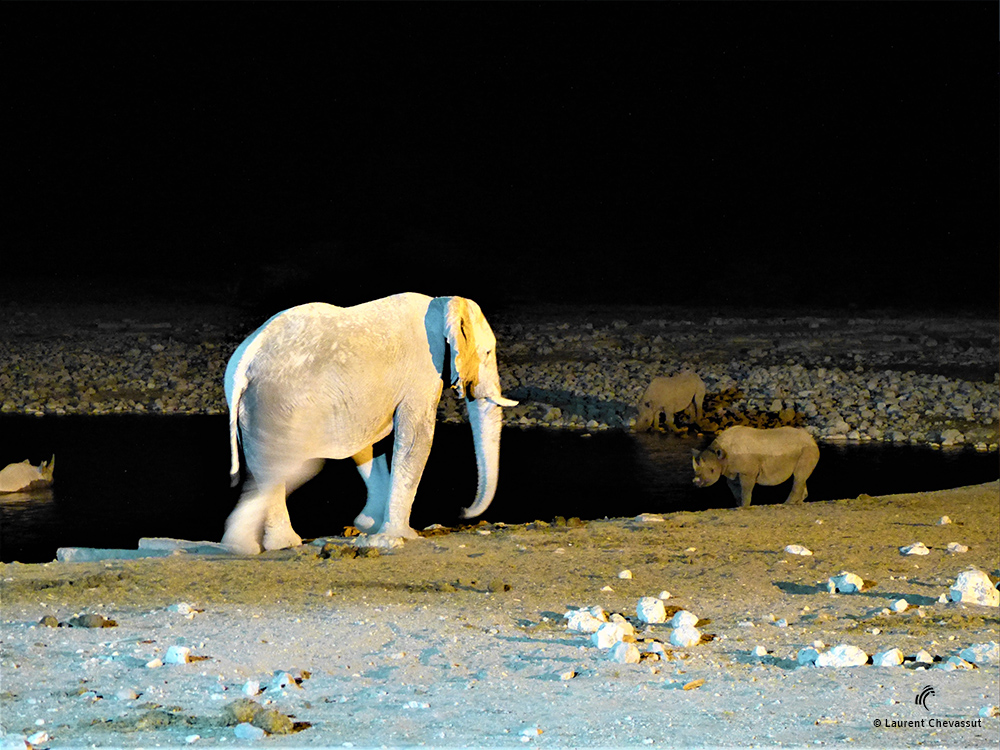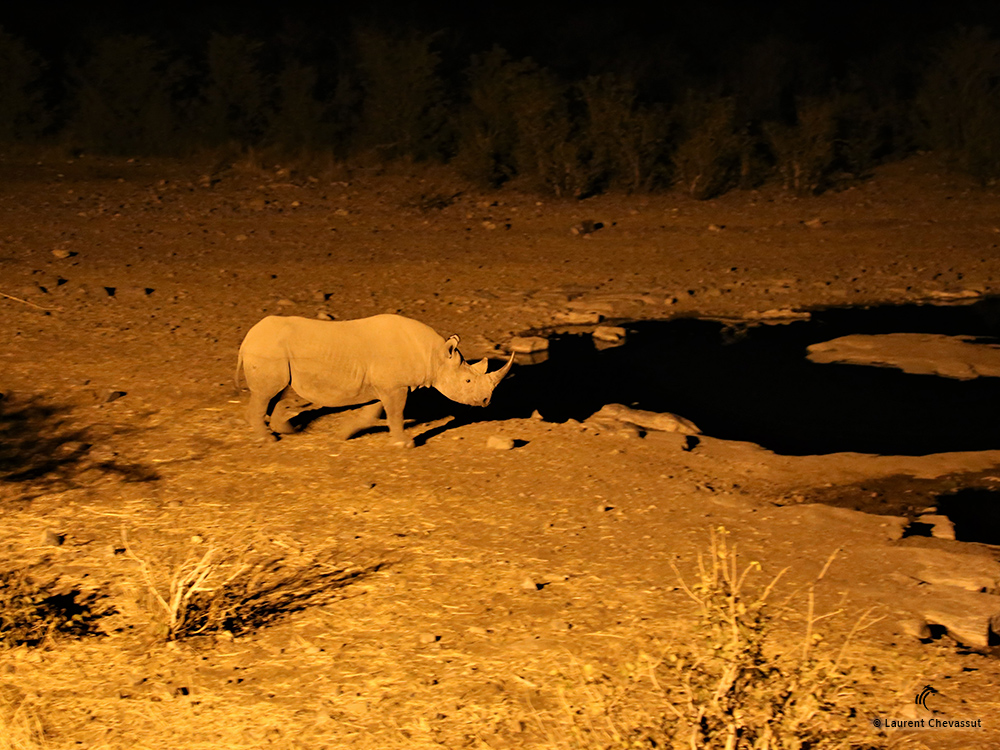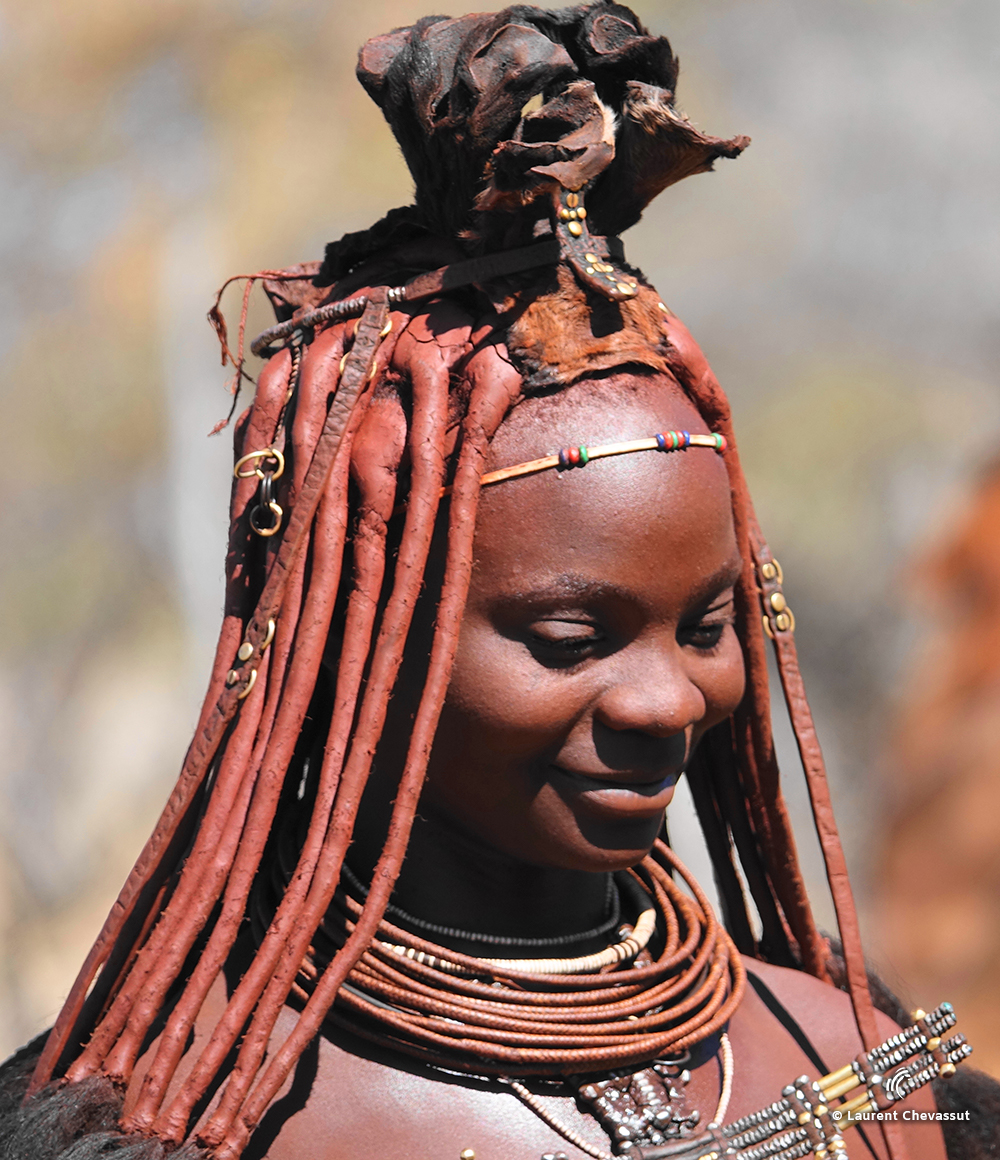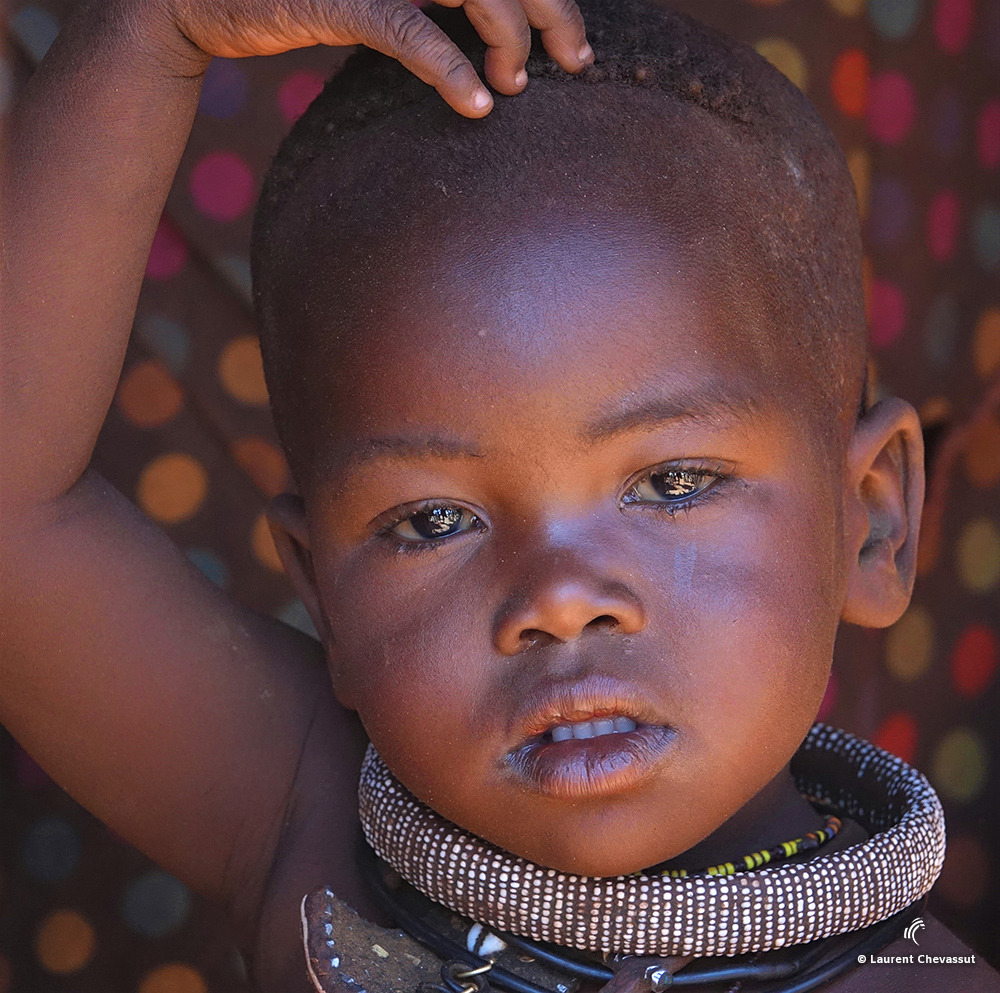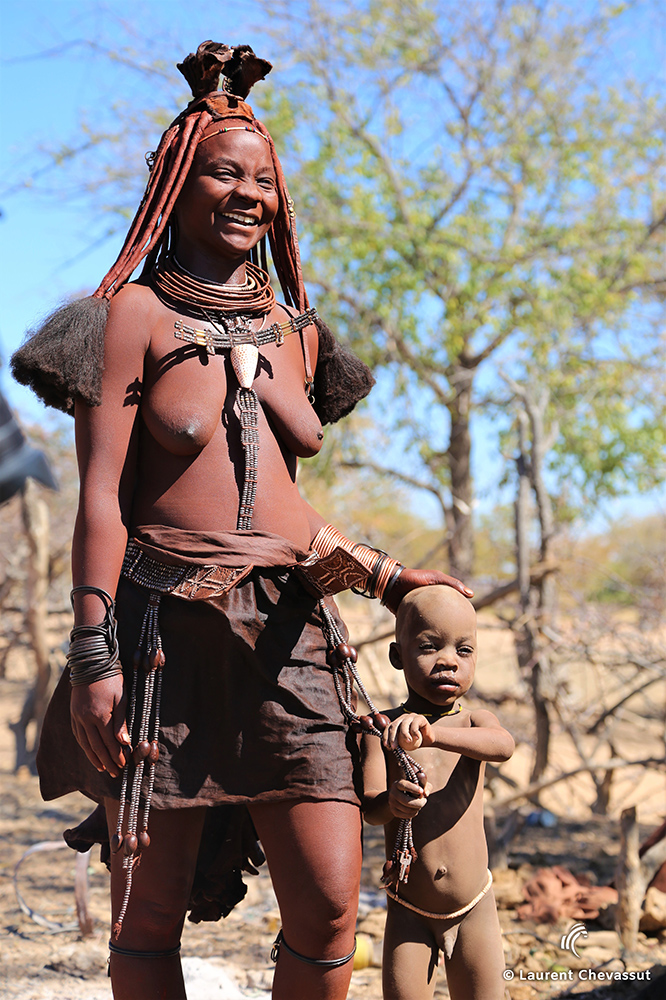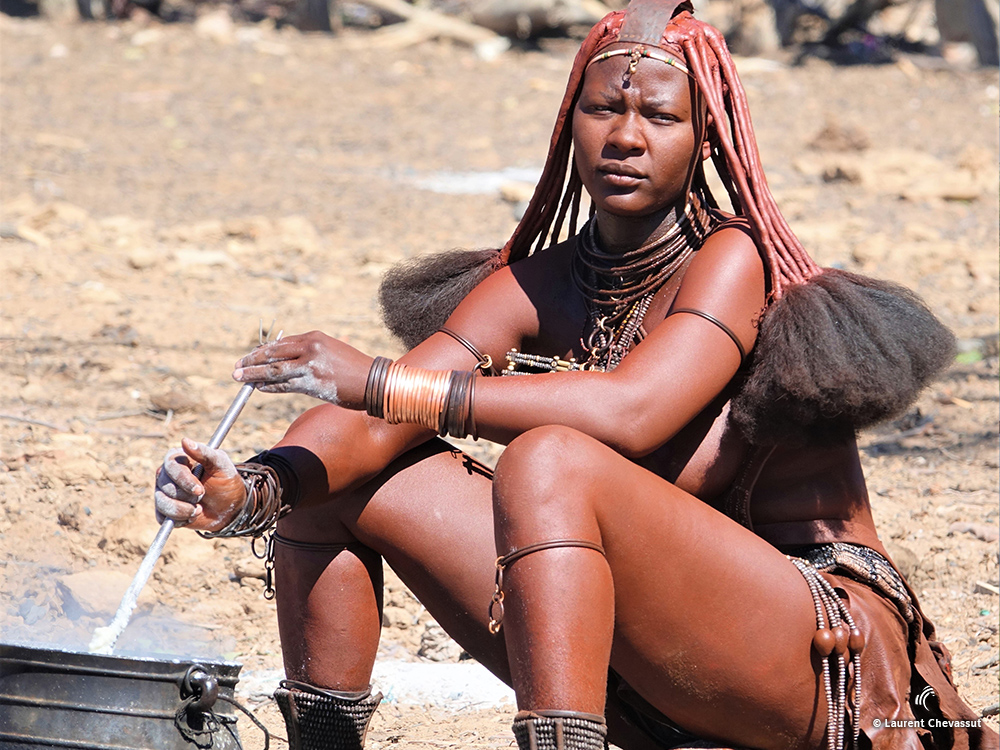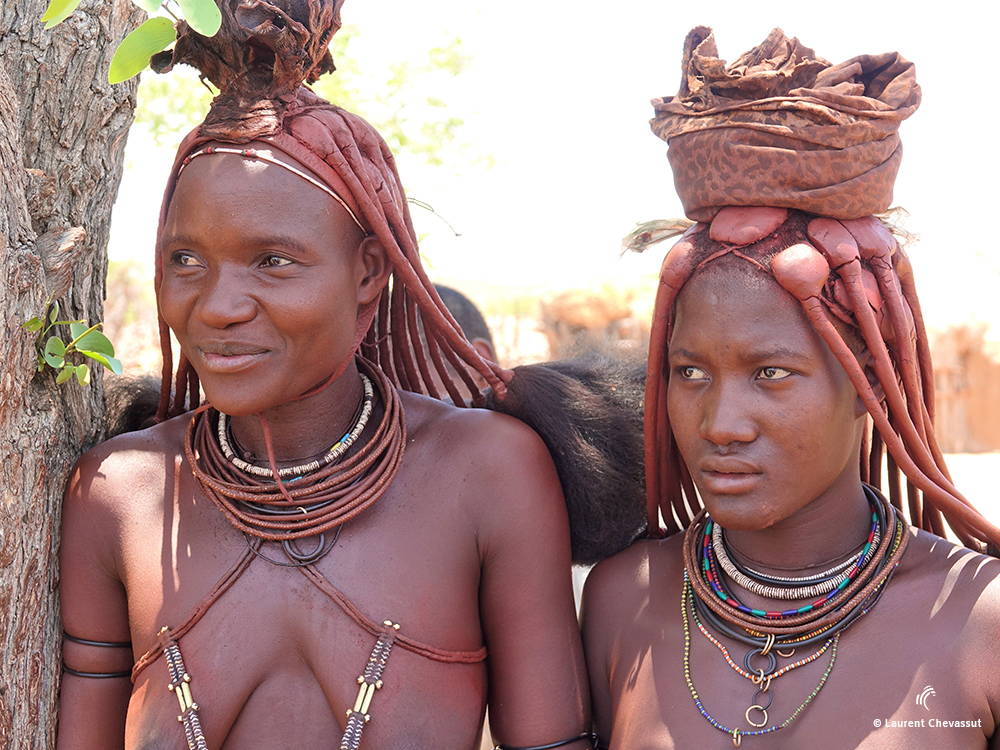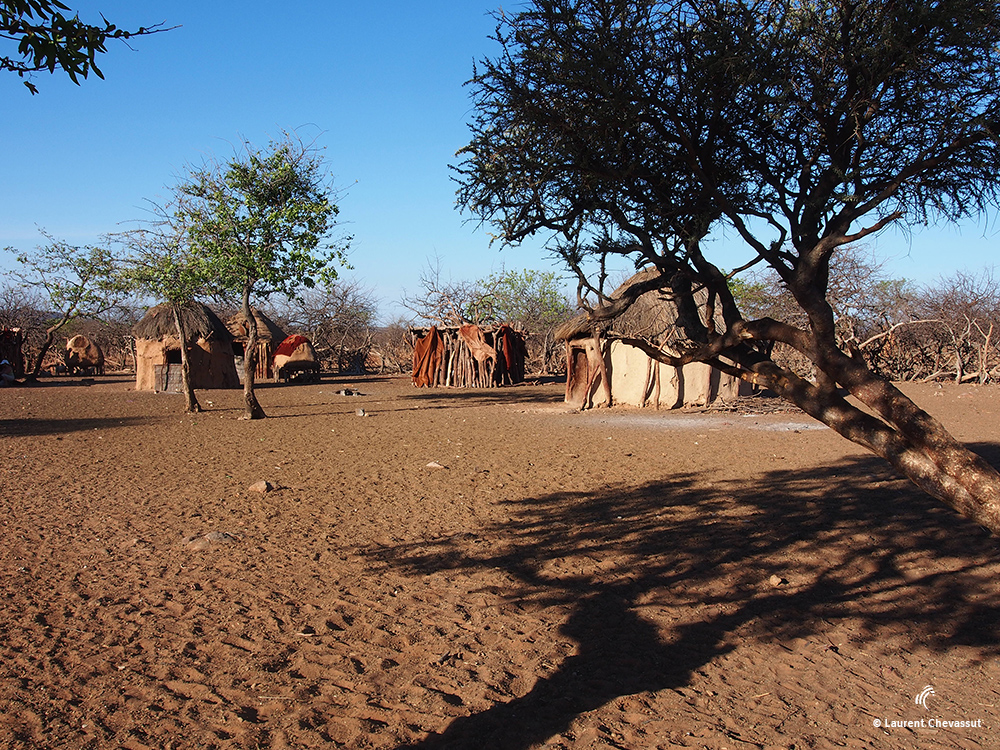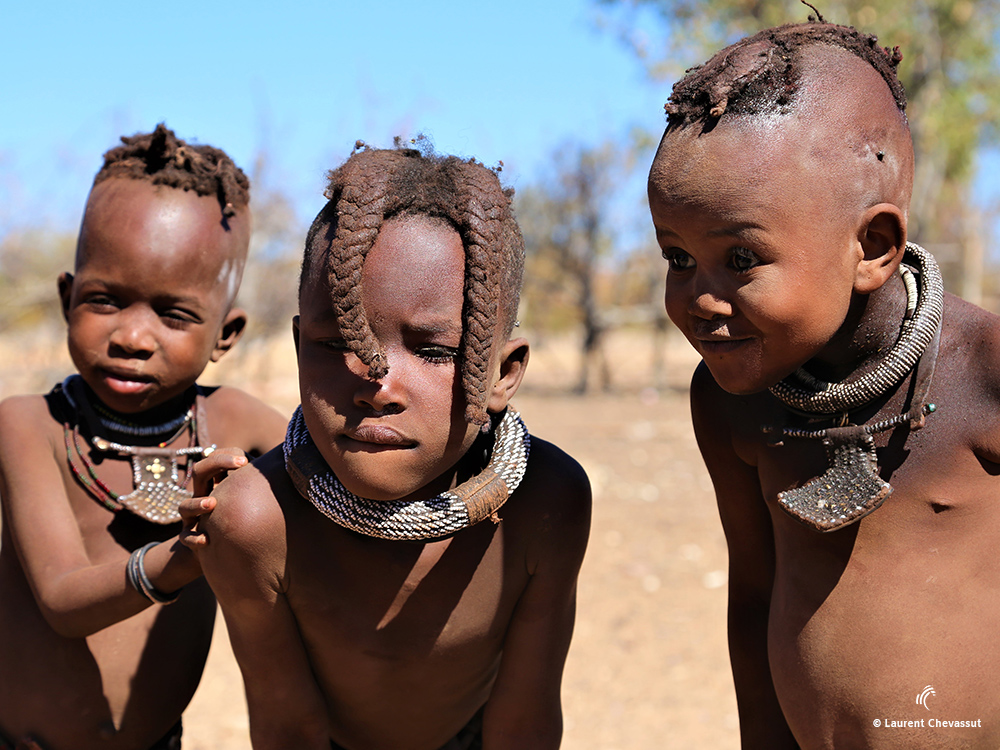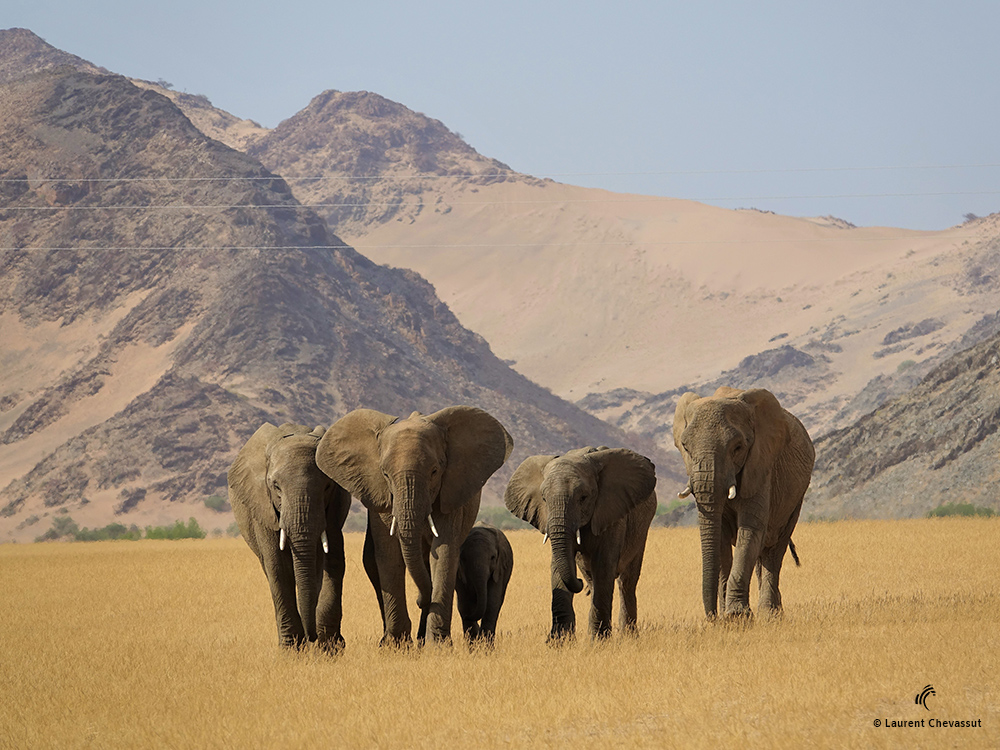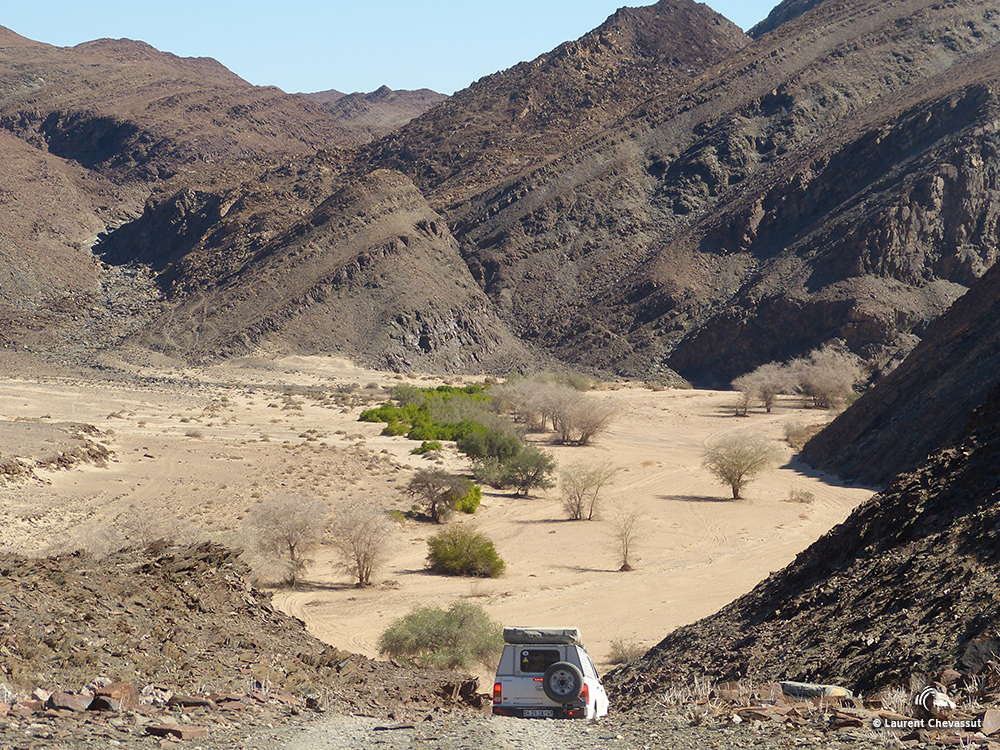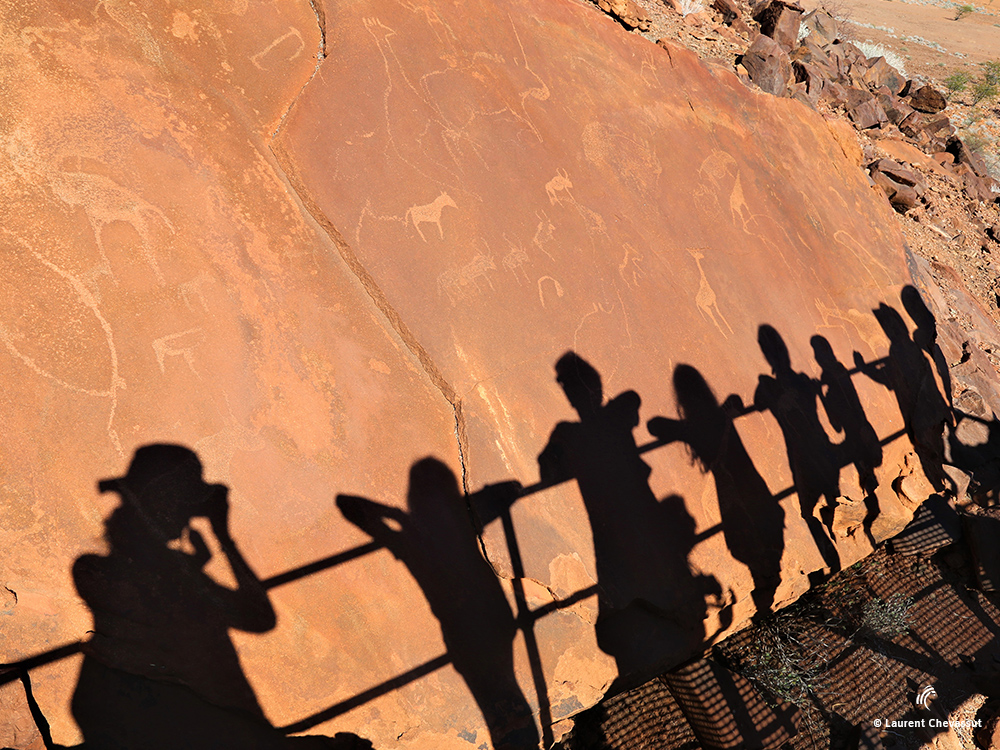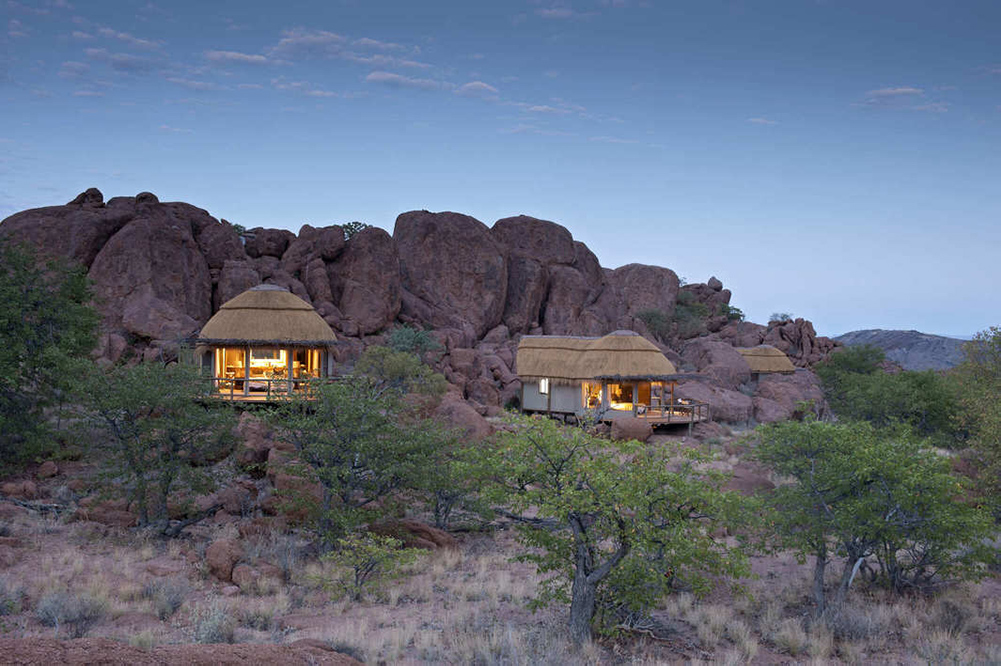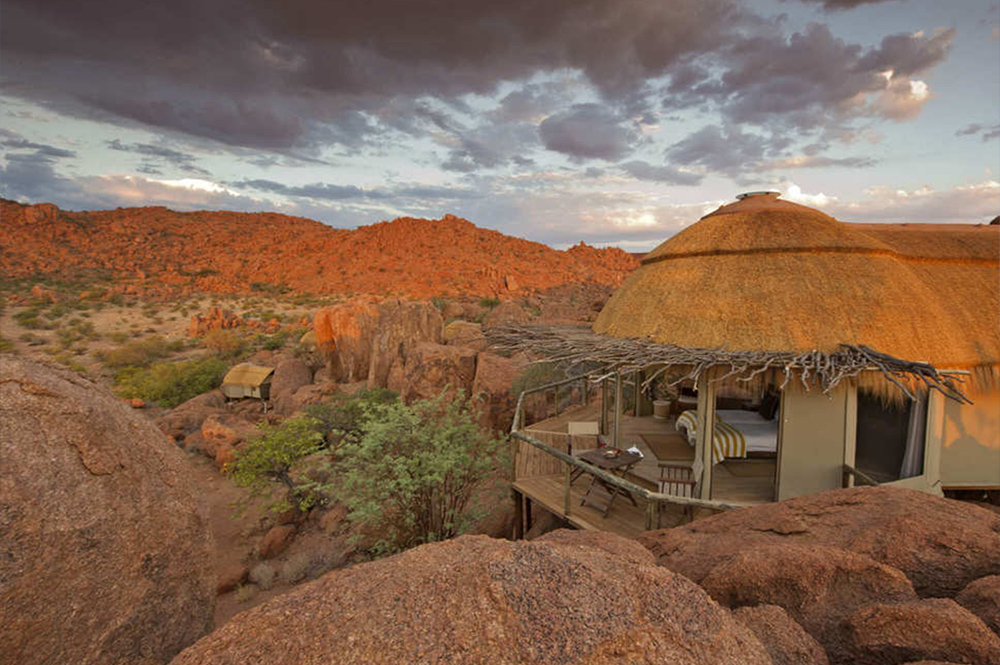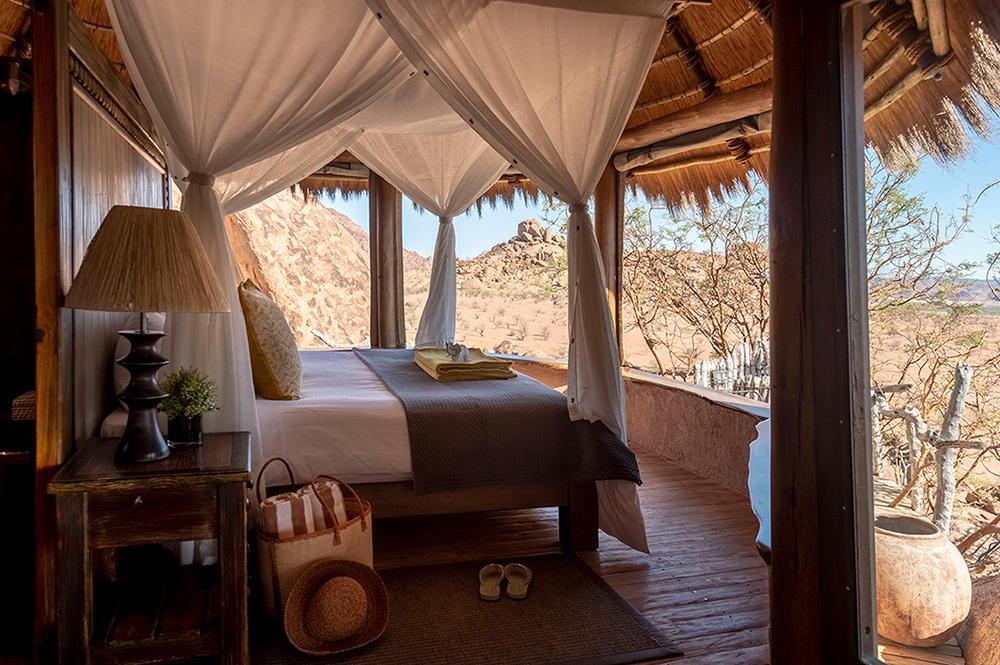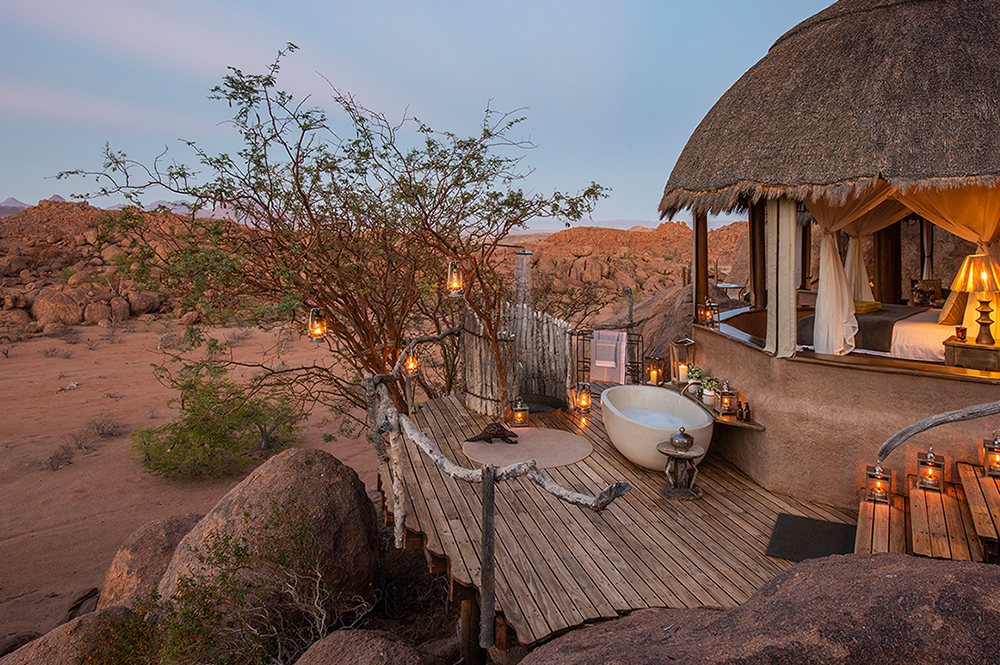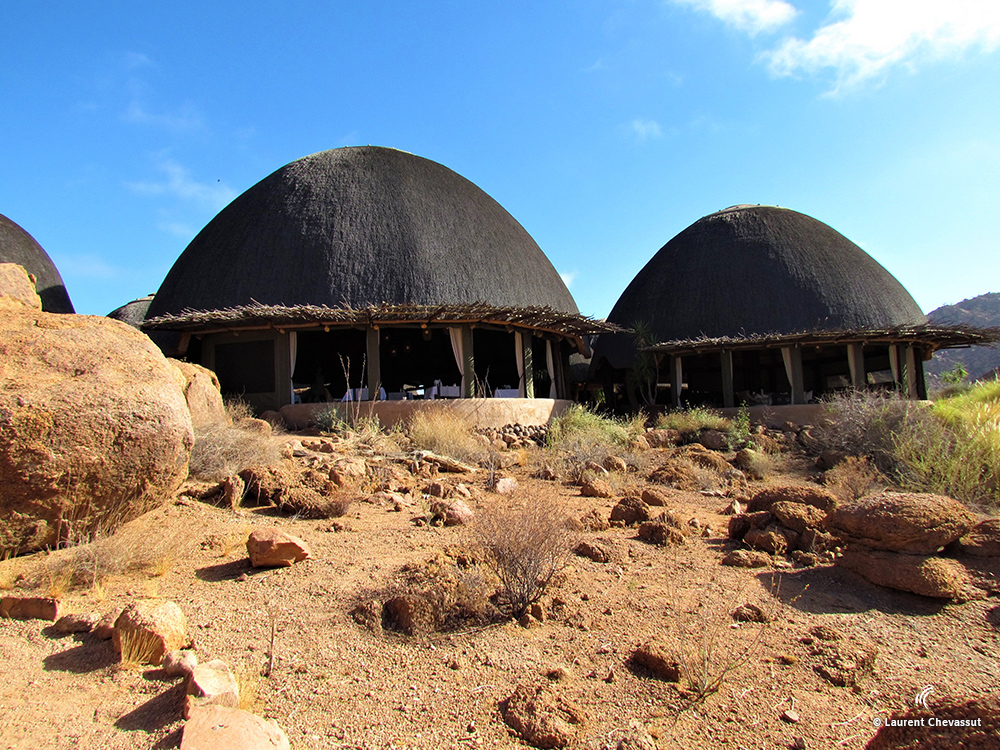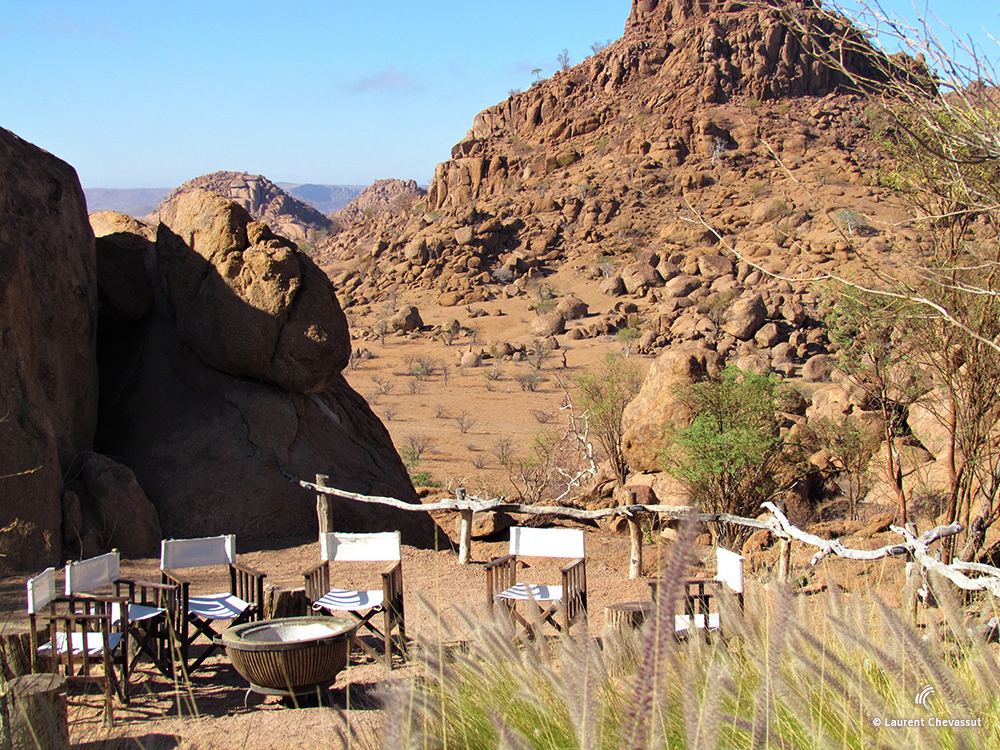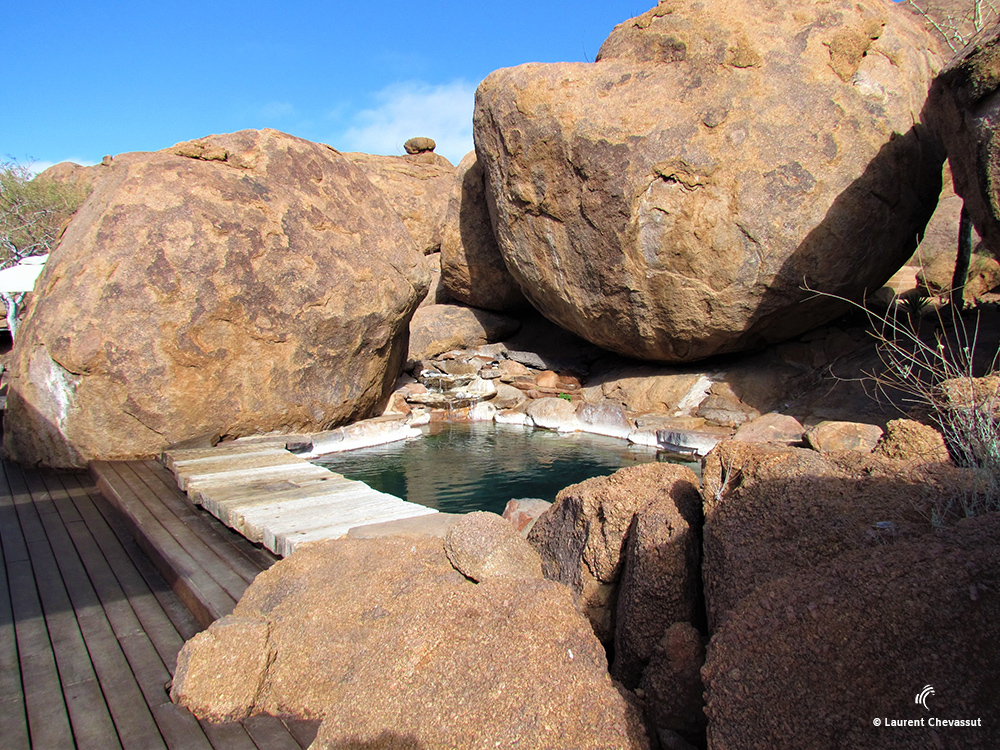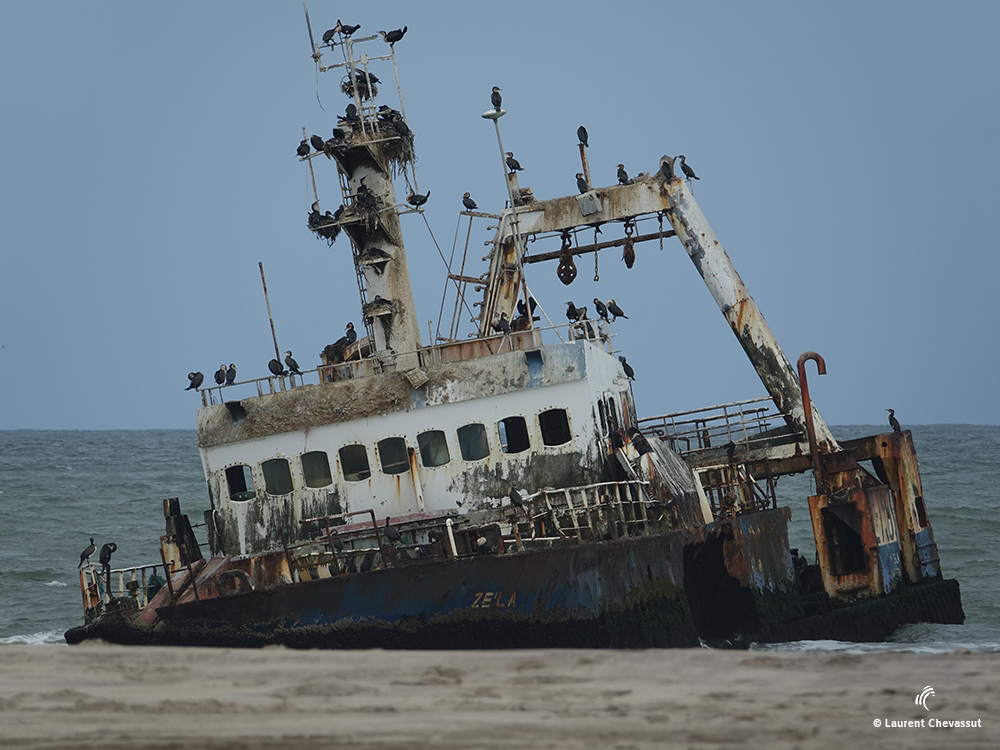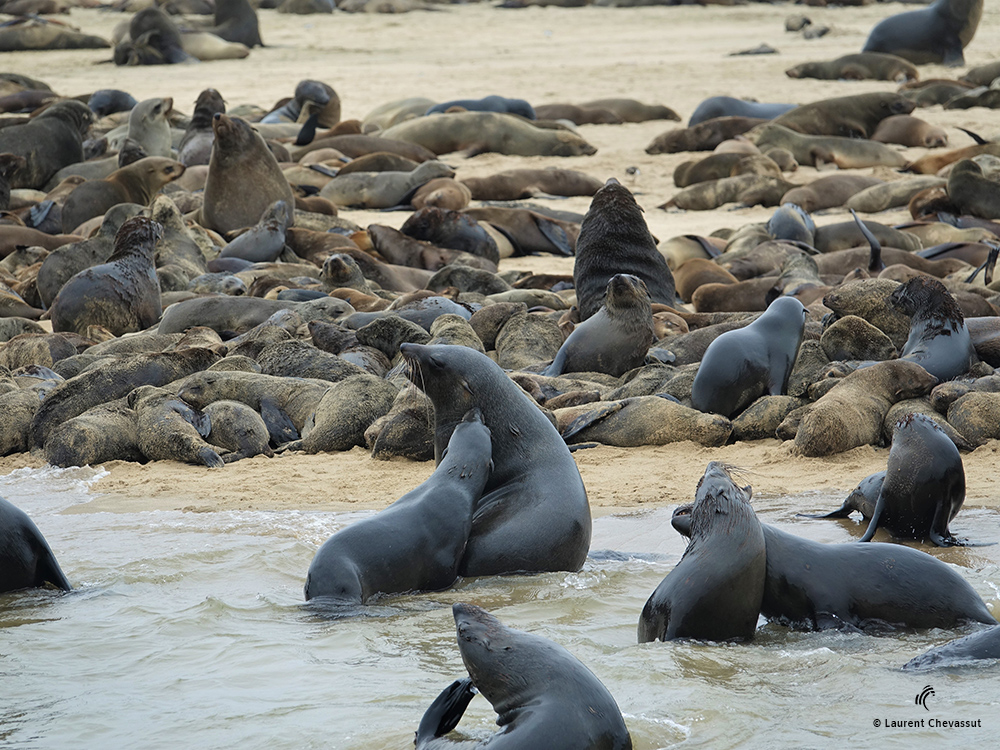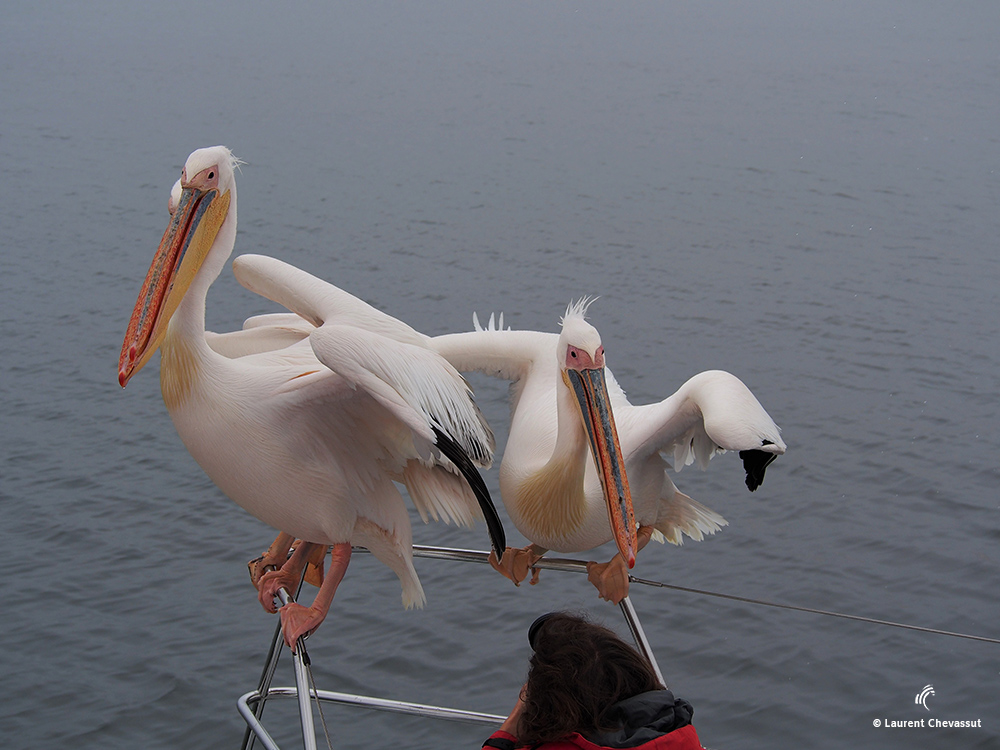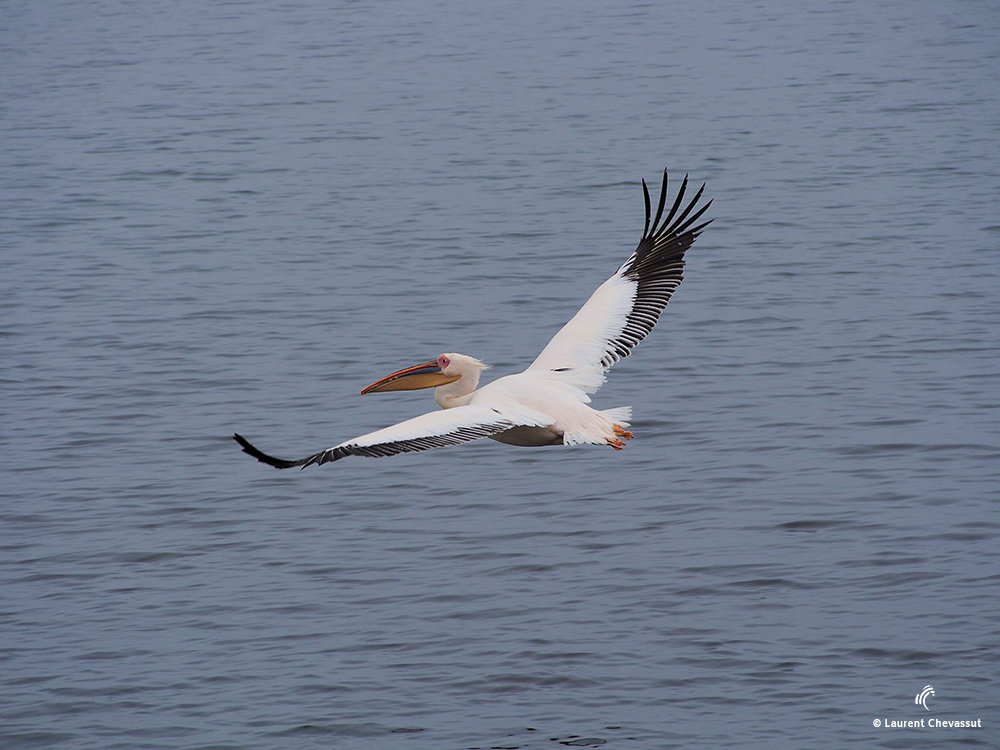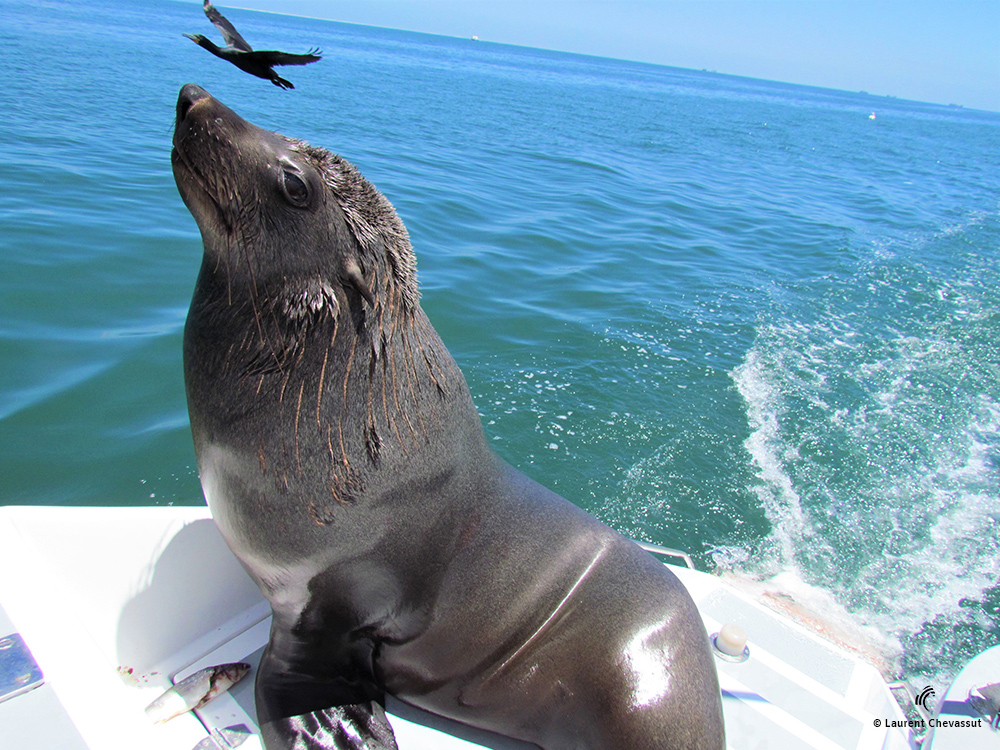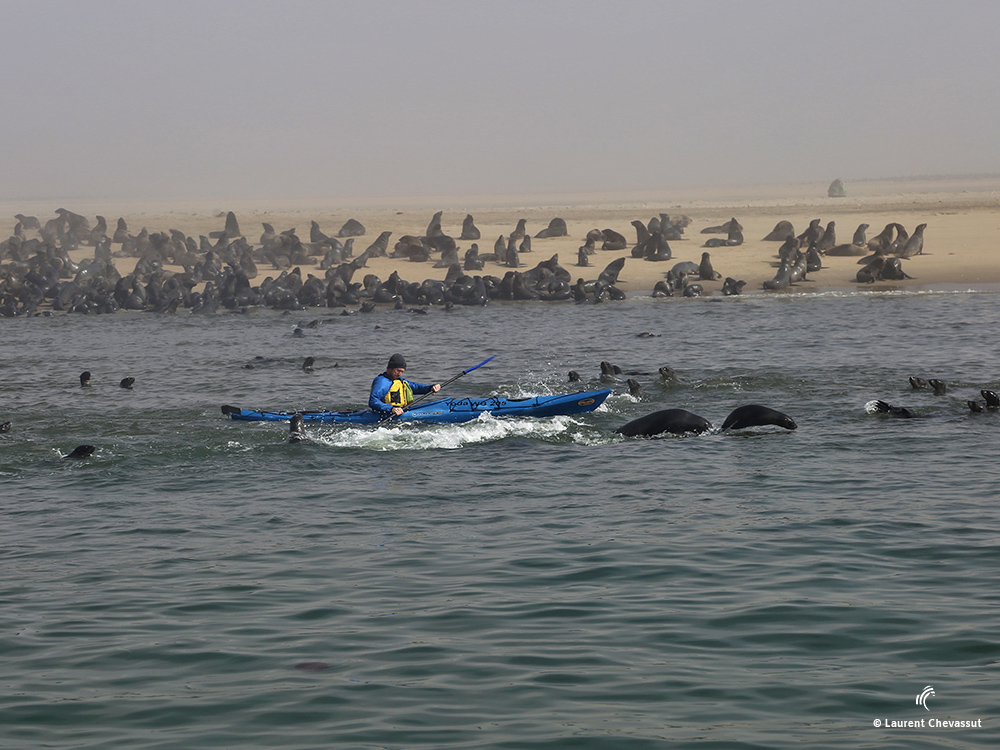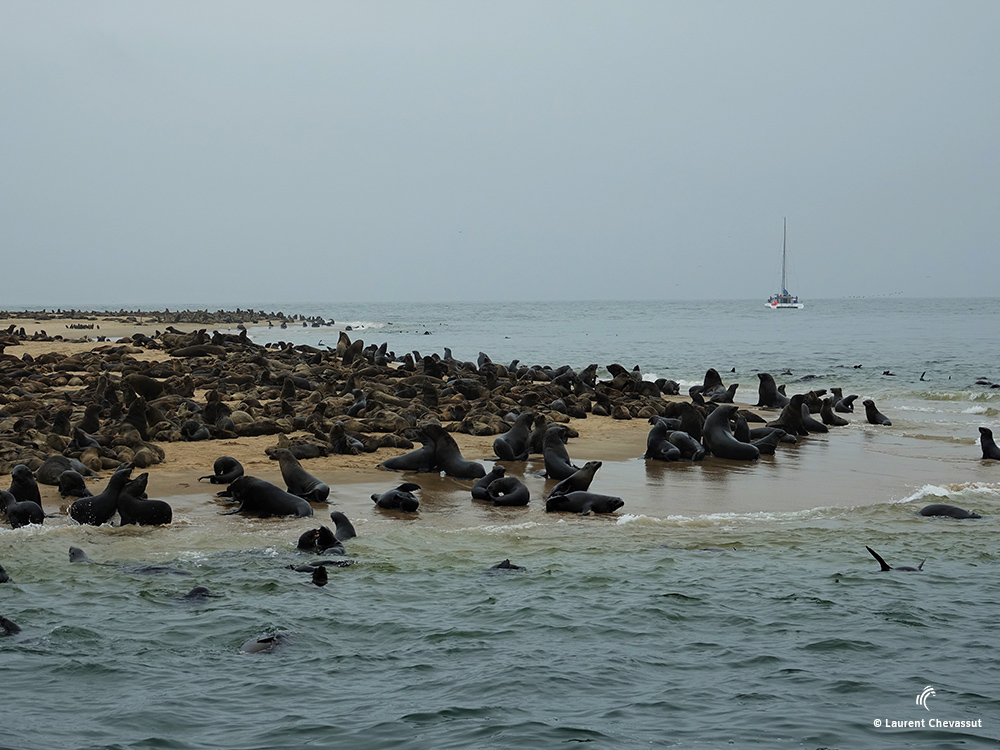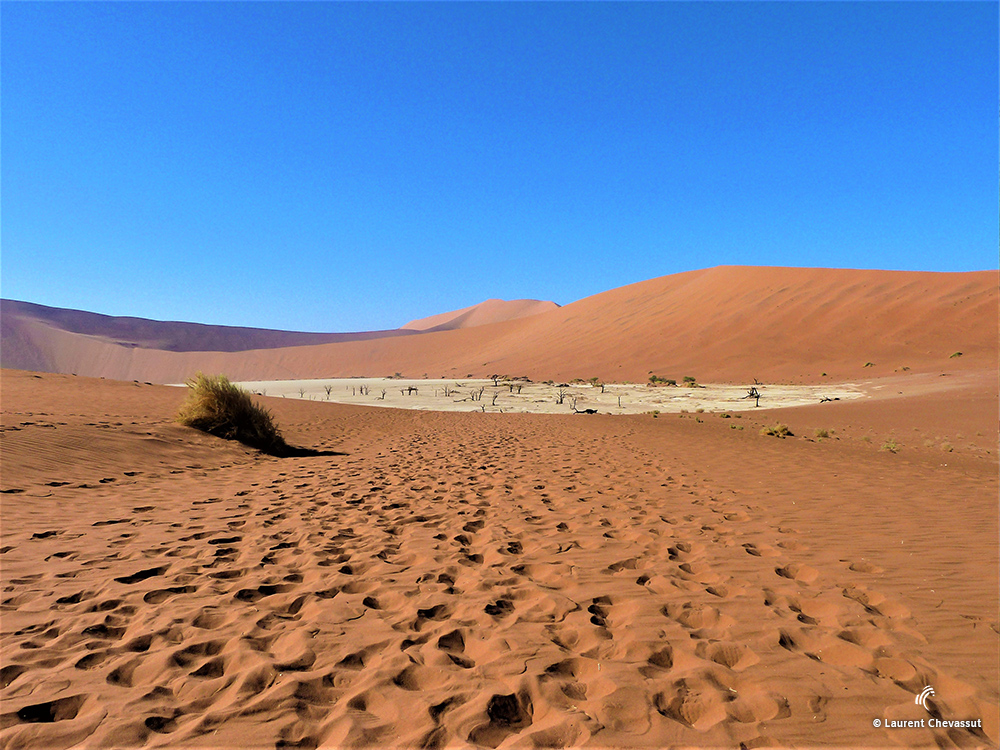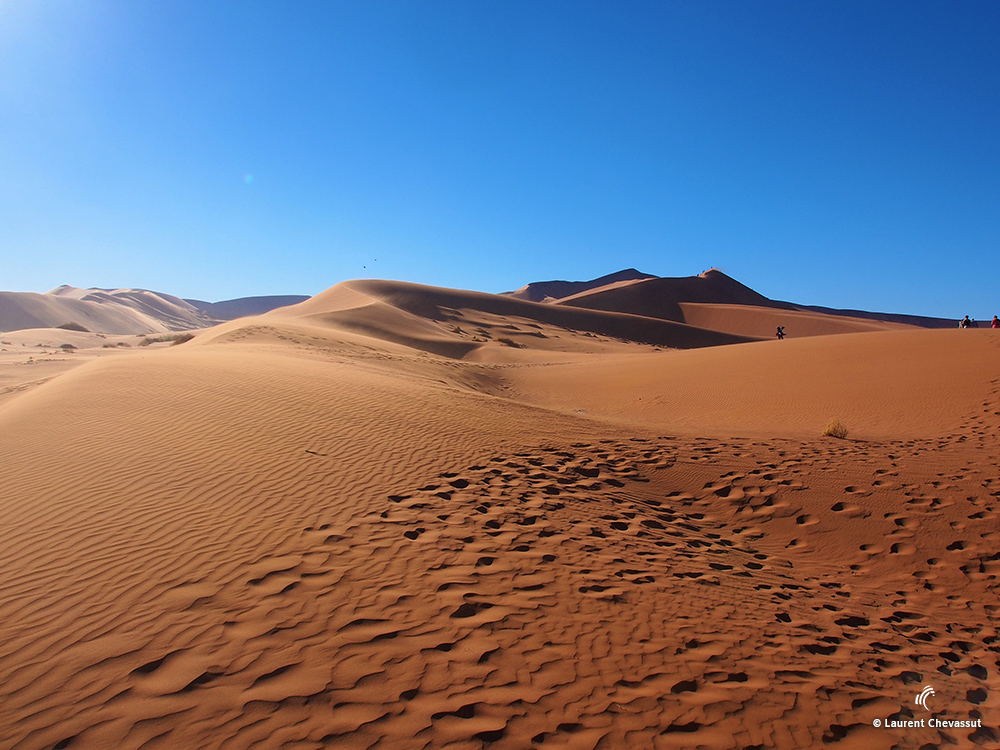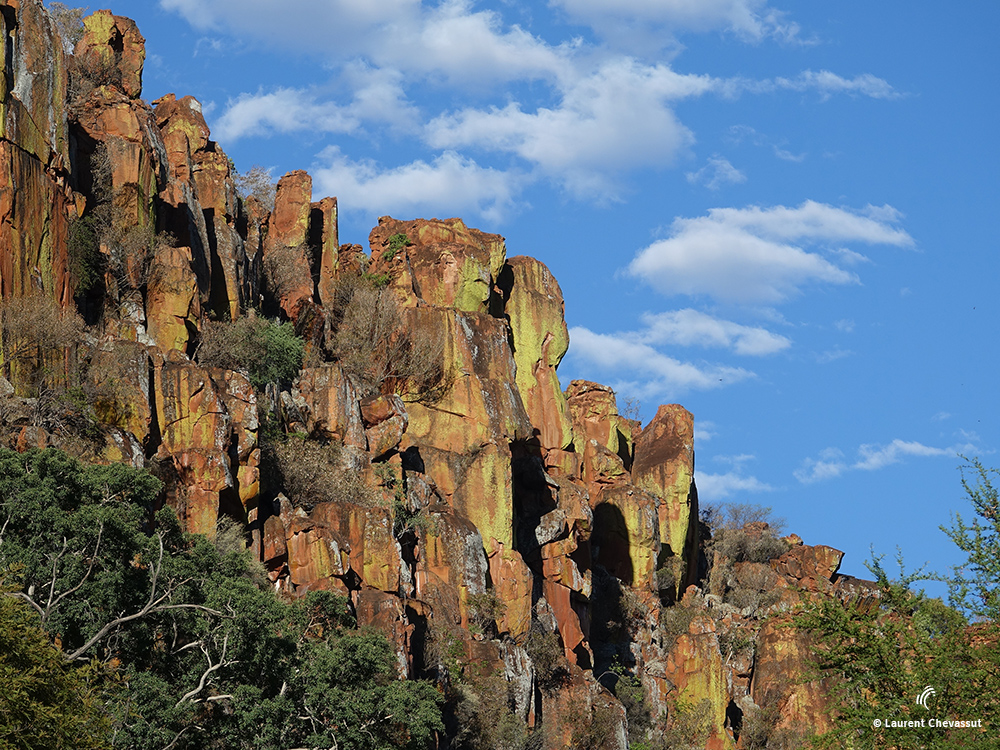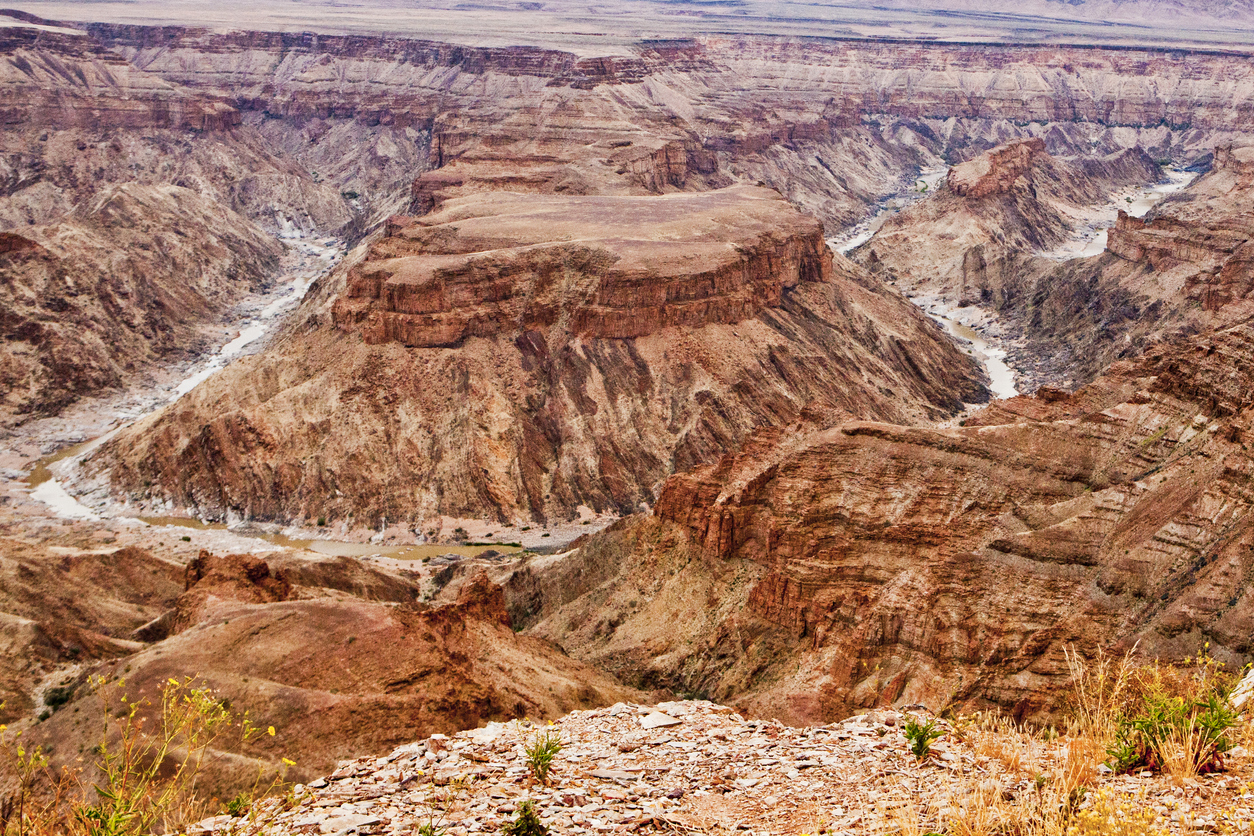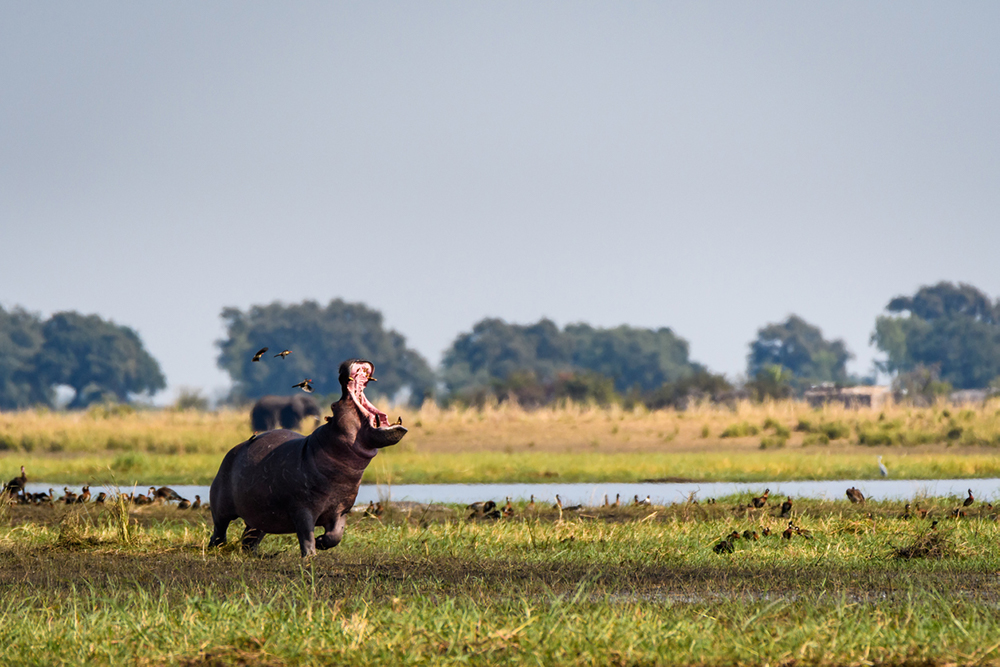Namibia is for lovers of the great outdoors who are looking for closeness to nature, wild animals but also for any traveller who would like to meet unusual ethnic groups.
The rich fauna of Etosha, the mountainous landscapes of Kaokoland, the lunar landscapes of the Namib at the edge of the ocean, the ochre massif of Damaraland or the Fish River Canyon (2nd largest canyon in the world) will delight you with their natural and wild beauty.
The diversity of its peoples and ethnic groups, with traditions and cultures so different from ours, will probably bring you back to the true values of humanity. Go and recharge your batteries in contact with the Himbas, the Herreros or the Sans (Bushmen people) who will show you where true happiness can be found…
Namibia is the gateway to the Safari in complete autonomy for novices. Alone, in pairs or in small groups, in a 4×4, is one of the most beautiful ways to go on an adventure.
During the day, imagine yourself at the wheel of your vehicle, facing a giraffe or an elephant, letting all the emotion and magic of this moment invade you in complete privacy. Of course, for the more shy, we can organise guided tailor-made programmes for you. Please note that only 15% of the roads are asphalted, so a 4×4 is essential to get around with a minimum of comfort and safety.
As for the evenings, equip yourself and live the adventure of wild camping with the tent on the 4×4, atmosphere, thrills and good humour are guaranteed!
A multitude of activities can be practised in Namibia such as quad biking, surfing on the dunes, kayaking to get close to marine animals or hot air ballooning. This beautiful country is really worth a visit for its diversity and to envisage a first safari in Africa. It will surely make you want to go back and try the Safari adventure again…
When to leave ?
Namibia can be visited all year round but beware of the rainy season from December to March.
This causes large flash floods that make many tracks impassable and observing animals becomes more difficult due to the height of the vegetation.
On the other hand, the month of January will bring you its share of surprises with many births in Etosha Park, or flowers in the Namib Desert.
The most beautiful national parks
Etosha National Park
One of the oldest and largest animal parks in Africa. It is also Namibia’s leading tourist destination. With 114 large and small mammal species, over 400 recorded bird species, dozens of reptiles and even a species of fish, Etosha is the country’s flagship park.
The park is in two parts with a more touristic area in the East and a wilder area in the West. The tracks are very passable and it is not uncommon to come face to face with a giraffe or an elephant as soon as you pass the entrance.
Several lodges of different quality levels allow you to find refuge in the evening or at midday depending on your budget at the entrance or inside the park.
Beware Namibia is a victim of its own success and it is sometimes necessary to book 1 year in advance to have a choice of accommodation.
The huge advantage of sleeping inside Etosha Park is the access in the evening to many illuminated and equipped water points which offer you unforgettable moments!
At night, go and watch the comings and goings of elephants, rhinos, or lions who come to drink at the water points, sometimes all at the same time! The interaction with these magnificent animals will not leave you indifferent as each one defends its place to survive. Only the roar of the lion will put an end to the debate.
Meet the HIMBAS people
A visit to this nomadic Bantu people from the banks of the Nile is a double-edged sword experience. For centuries they have been fighting to preserve their nomadic lifestyle and culture, but the spaces of freedom are becoming increasingly narrower. There are now believed to be only about 12,000 individuals left in northern Namibia spread across Kaokoland and the surrounding borders.
This plunge into a way of life from another time could be akin to voyeurism for those who are not interested in tribal culture. Many tourist visits are offered, the ethics of which remain to be discussed.
Terres Sauvages offers you a day-long immersion in the discovery of this fascinating people who will make you react to the realities of life. While we were joking with 3 Himbas women about the differences in customs, I let myself laugh at their teasing. One of them then asked me: “tell me, are you laughing with your mouth or with your heart”?
This incredibly frank question still makes me think about the importance of human relations. They are incredibly lucid about the needs of existence… So we like or dislike, but what is certain is that it is a real encounter.
Dorob National Park
This region is known as a fisherman’s paradise, but it also contains a few surprises. Vast lichen fields are found north of Wlotzkasbaken and Cape Cross, while the Messum crater to the north contains rock paintings of San and archaeological sites of nomadic Damara.
It is bordered to the north by the Ugab River and the Skeleton Coast Park. The Omaruru River divides it in two, while the Swakop River lies just south of its border.
The main activity consists of going up dry rivers in search of elephants or desert rhinos. Adapted to their arid environment, they are able to cover more than 150 km in one night to reach a water point.
Our favourite lodge: Mowani Moutain Camp
In addition to the fantastic integration in its environment, its setting and its spectacular view, this eco-lodge invested also offers excursions to meet your expectations. Especially the one in search of the desert elephants which will guarantee you an unforgettable moment.
and for more information about premium lodge in Namibia, follow this link : https://terres-sauvages.ch/en/experiences-2/premium/wolwedans-dunes-lodge-namibia/
Skeleton Coast Parc
«Death would be preferable to banishment in such a country,” said Sweden’s first explorer Charles John Andersson when he encountered stories from the Skeleton Coast. But this area, the Skeleton Coast Park, is now recognised as one of Namibia’s greatest treasures, in that it is one of the last great wildernesses in the world.
Originally proclaimed in 1971, in its present form in 1973, it stretches from the Ugab River in the south for 500 km to the Kunene River in the north and about 40 km inland. Dense coastal fog and cold sea breezes caused by the cold Benguela Current add atmosphere to the windswept beaches that are littered with shipwrecks, bones and other debris.
The park is a sanctuary for elephants, rhinos and desert lions and the mouth of the Kunene River is a vital wetland.
Cape Cross Fur Seal Reserve
Cape Cross a une signification à la fois historique et biologique et est une attraction touristique populaire. Le navigateur portugais, Diego Cão a atterri ici en 1486 lors de sa deuxième expédition au sud de l’équateur et a planté une croix pour marquer son voyage. Une réplique est visible ici aujourd’hui.
C’est surtout une des plus grosse colonie d’otaries à fourrure puisque à la saison des amours en décembre, on peut observer jusqu’à 100 000 spécimens.
Favourite excursion :
In spite of the rather touristic side, the Mola Mola boat trip remains one of the best ways to go and observe the fur seals, the majestic pelicans and of course the Mola Mola, the biggest sunfish of the Atlantic Ocean. It is even sometimes possible to come across dolphins or other cetaceans if you are lucky.
Even if you will be offered blankets on the boat, plan a little wool in the morning, while waiting for the sun to rise. For the more adventurous, it is possible to make this excursion by sea kayak to get even closer to the animals!
Namib-Naukluft National Parc
The magic of the oldest desert in the world. Namibia’s largest conservation area contains among others the imposing sand dunes of Sossusvlei, the imposing Sesriem Canyon, the forgotten shipwrecks and ghost towns along the icy Atlantic coast, the inselbergs, the austere mountain ranges, and the lichen-encrusted gravel plains.
To fully enjoy the dunes of Sossusvlei, you have to get up early; it is important to leave 1 hour before sunrise to cover the 60 km that will take you to the heart of this cathedral of dunes. To go even further, either you are guided and you can easily take the most beautiful pictures of sunrise in the dunes, or you feel like an adventurer with your 4×4, and you might spend this good time trying to get out of the sand!
You should take advantage of the heat of the afternoons to visit the Sesriem canyon and enjoy its coolness. One understands better how life was able to continue in this ocean of sand. Each season brings its share of surprises in this region and it is magical to see this desert in January filled with more than 600 different species of flowers with the most subtle scents.
Waterberg plateau Park
Imposing sandstone cliffs, dinosaur footprints, mysterious rock carvings and some of Namibia’s rarest and most valuable animal species are found on the Waterberg Plateau. Proclaimed as a sanctuary for rare and endangered game species, Waterberg has played a vital role in breeding species for the restocking of other parks and conservation areas.
The area is also home to the last remaining population of Cape Vultures in Namibia. This is a very interesting stop on the road to Etosha NP..
Fish River Canyon and Aï / Ais Hot Springs
Africa’s largest natural gorge, some of the oldest rock paintings in the world, one of the world’s richest botanical hot spots and Namibia’s most popular hiking trail. Ai- / Ais means burning water in the local Nama language and refers to the sulphurous hot springs found in the park along the Fish River.
The park is dominated by the second largest canyon in the world – the Fish River Canyon – which took over 600 million years to evolve. It also contains hidden treasures such as the little-known Apollo 11 Cave, containing an animal image over 25,000 years old.
Khaudum National Park
The Khaudum National Park was created for conservation and not for tourism profit. This characteristic gives the feeling of wilderness that embraces the soul when visiting the park. It is wild, and we want to keep it that way. “The park, located in north-eastern Namibia on the border with Botswana, receives fewer than 3,000 visitors a year and there are few trails through the deep sand of the Kalahari. More elephants than people visit the park. It is a refuge for wild dogs, antelope, lion, cheetah and leopard.
Bwabwata National Park (caprivi strip)
The park was first proclaimed a Caprivi Wildlife Reserve in 1966 and was transformed into the Caprivi Wildlife Park in 1968. It was gazetted as Bwabwata National Park in 2007 and incorporated the former Mahango Wildlife Reserve. The park has had an eventful history as it was declared a military zone by the South African Defence Force during the Namibian War of Liberation. It was only after independence in 1990 that the park could be properly managed as a conservation area.
It provides a wonderful safari experience in the midst of sumptuous scenery.
Mangetti National Park
Mangetti is part of a new generation of parks aimed at reducing rural poverty through tourism development, joint management and benefit sharing with local communities. One of Namibia’s last national parks, it has the potential to become a new tourism hotspot in the north, while protecting wildlife and vegetation and providing tangible socio-economic benefits to local communities through careful tourism development.
The area was previously managed as a wildlife camp for the breeding of rare and endangered species. It is an interesting stop on the road to Caprivi.
Mudumu National Park
The Mudumu National Park, one of Namibia’s least known parks, is very rewarding for adventurous visitors. The main attraction is the riverine habitat of the Kwando River, while the interior of the fossilised Mudumu Mulapo stream and the dense mopane forest are home to forest species. There is no formal entrance gate or park fence.
Mudumu is home to a large population of elephants. The park serves as a corridor for these pachyderms during their migration between Botswana, Zambia, Angola and Zimbabwe.
Nkasa Rupara National Park
Mamili was officially proclaimed on 1 March 1990, just days before Namibia gained independence. The name refers to the seven chiefs of that name who have ruled the Mafwe people living in this eastern part of the Caprivi region since 1864. Some call the area the Nkasa Lupala Park, in reference to the two dominant islands in the park.
It is the largest wetland with conservation status in Namibia and a paradise for wetland species. When the flood waters of the Kwando River are high, Mamili becomes like a mini Okavango Delta. There are nearly 1,000 buffalo in Mamili, the largest concentration in the country. It is also an important corridor for elephants moving from Botswana to Angola and Zambia and is considered a central breeding area for wildlife that may disperse to neighbouring reserves.
Tsau Khaeb National Park
From giant rock arches, meteor craters, fossil and archaeological sites to Africa’s most important shipwreck finds and some of the most pristine and wild landscapes on the planet, the new Sperrgebiet National Park (SNP) is a jewel in Namibia’s network of protected areas.
